


FAMILY PLANNING • PREGNANCY • BIRTH • INFANCY FAMILY PLANNING • PREGNANCY • BIRTH • INFANCY 9 771994 644006 Mother Child& YOU CAN DO IT, MUM! PLUS: GIVEAWAYS • BEST BUYS • MATERNITY FASHION • TRAVEL ADVICE FOR RELACTATING, COPING WITH PANDEMIC STRESS, DEALING WITH CLINGINESS AND MORE WHAT ELSE IS INSIDE? How to ease baby’s pain during procedures Help your kids open up with puppet play Setting up a ‘green’ nursery Quick and easy low-carb recipes RSA R35.00 (VAT Incl.) Issue 23 (Winter 2021) • • • • Movement and play for your infant Forging loving connections between dad and child Introducing African wholefoods LEAVE THE PREGNANCY AND PARENTHOOD WORRIES BEHIND WITH GREAT ADVICE: FOR POSITIVE BIRTH PLANS AND BABY BUDGETING, TO THE TERRIBLE 2S AND ACTIVE LEARNING Decor for a small room What else is inside?
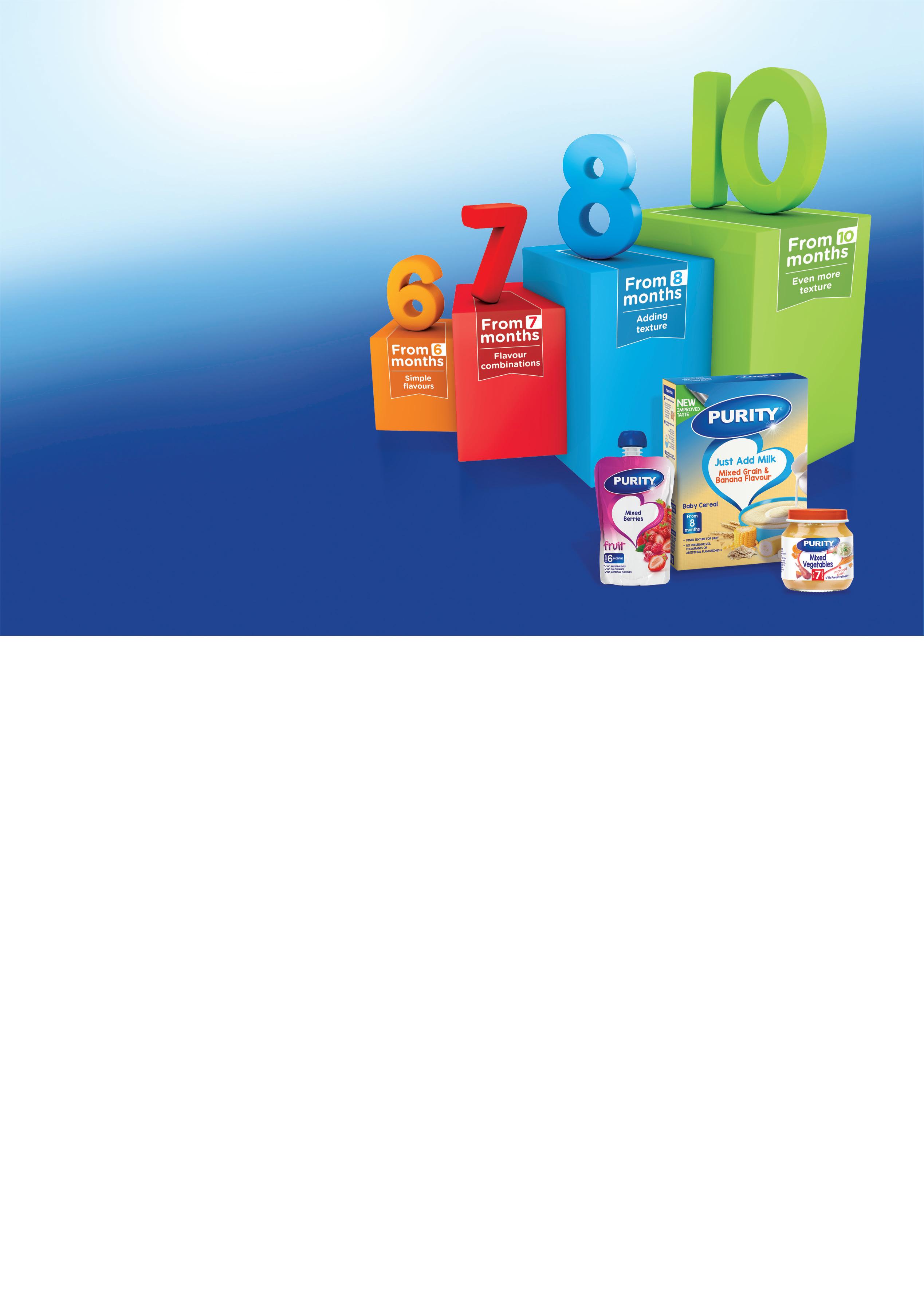








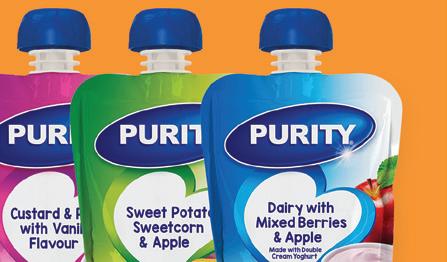




















































































































































IT WONDERFUL
Five things you can do to help you have a more positive birth experience

“SAY MA-MA”
When should your child start speaking? Here’s what parents should look for if concerned about language development
GET A MOVE ON!
Infants need lots of active movement and play—and there are simple ways to help them get it

EMOTIONAL ROLLER COASTER
Yes, the ‘terrible 2s’ are full-on, but let’s look at things from a child’s perspective
NEW-SCHOOL IDEAS Why—and how—we should make our classrooms active learning spaces
DAD
MATTERS
ways fathers can share love and connection with their babies, preschoolers and young children
KEEP WATCH
With young children—as well as older children and adolescents— getting more screen time than ever, it’s important for parents to keep it at healthy levels 56

MONEY-WISE
A nine-month plan for getting your family’s finances in order before baby arrives
FUTURE FOODS
Many people are not aware of the health benefits of traditional African ingredients—Local Village Foods is trying to change that
4 Mother & Child Issue 26
16
ISSUE 26 CONTENTS
MAKE IT WONDERFUL Five things you can do to help you have a more positive birth experience 16 MAKE
22
28
36
42
48
6
52
60
Features 52 28



Made to nourish Squish 100% fruit and vegetable purees are made with quality ingredients and plenty of love, resulting in an abundance of benefits for your bundle of joy. *Squish 100% fruit and vegetable purees are allegen free. *Squish yogi contains cow’s milk. Find out more by visiting www.squish.co.za @rhodes_squish Preservative Free Free from colourants and flavourants too! No Added Cane Sugar Setting them up for healthy future habits. Allergen Free* No egg, wheat, dairy, soya, nuts or gluten. No Added Starch* 100% Fruit & Veg No dilution, all delicious taste! so they can flourish!


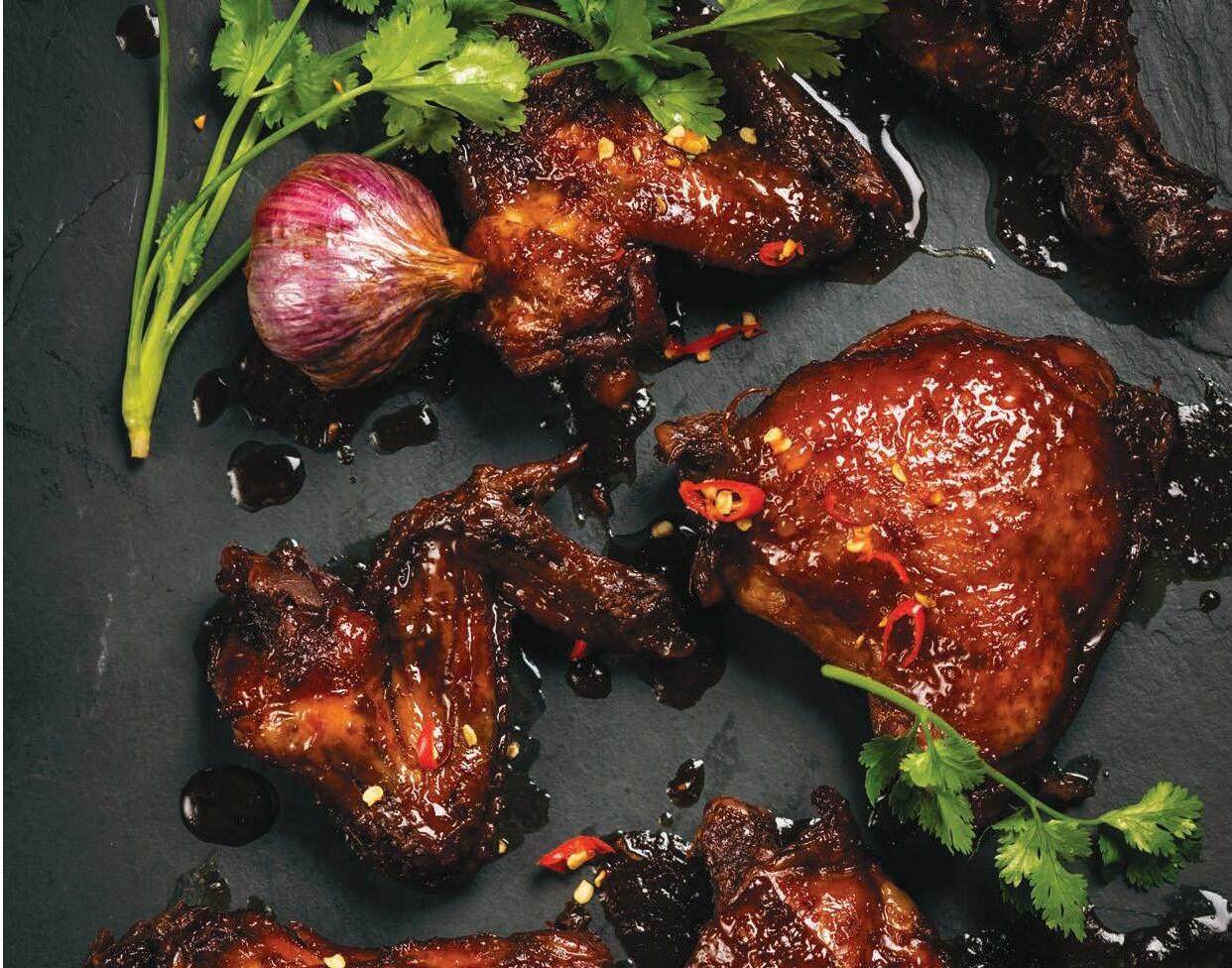


6 Mother & Child Issue 26 12 THE BUZZ News, views and trends for pregnancy, birth and motherhood 66
In Trish
Nest’s latest cookbook,
Love, she shows how to prepare delicious, healthy meals for those gathered around your table 70 DECOR: SPACE OUT Is that small room in your house just depressing? Here are simple ways to make it appear bigger 74 TRAVEL & OUTINGS: CUT THE COST, NOT THE FUN 7 ways you and your family can holiday on a shoestring budget Regulars 66 66 ISSUE 26 CONTENTS 74 TRAVEL & OUTINGS: CUT THE COSTS, NOT THE FUN 7 ways you and your family can holiday on a shoestring budget 70
WHAT’S FOR DINNER?
van der
Cooking with





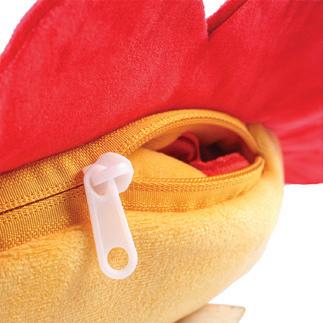



©2022 Mattel Play All Day! 2IN1 Reversable Plush Pillow Assorted and Sing Along Microphone. Cuddly Friends. 45CM Big Plush Asst Available at: And other Select Retailers.










8 Mother & Child Issue 26 84 IN THE BAG New trending beautifying products that work like a charm 88 OUR FAVOURITE THINGS A pick of the latest quality must-haves for your little one 90 GROWING UP FAST! Here are a few nifty goodies for mommy’s big girl and big boy 92 EASY DOES IT Novel products to give mothers a helping hand 94 WE LOVE BOOKS Bedtime stories, a touch-and-feel book, and a new release of Peter Rabbit are all among this quarter’s favourite reads for youngsters Best Buys ISSUE 26 CONTENTS








011 023 5010 | 072 332 5668 info.chartwell@curro.co.za 119 Third Road, Chartwell, Johannesburg ENROL NOW for 2023 From 3 months to Grade R Small class sizes Internally developed play-based curriculum On-site kitchen with meals included in the school fees Open full-day, year-round
MESSAGE FROM TEAM the
nd so we’ve come to another year-end—this time perhaps with more hope and happiness, as the worst of the pandemic seems behind us and we can once more breathe easy (excuse the pun). Moms (and dads) can also breathe easy with all the informative articles we’ve gathered in this edition, making the journey of parenthood a little less stressful.
You can look forward to learning more about: how to prepare a positive birth experience for yourself; baby’s language development (“when is he going to start talking?”); how to survive your toddler’s terrible 2s, by seeing things from her perspective; ways in which fathers can share love and connection with their young children.


There are also helpful articles on introducing more traditional African wholefoods such as sorghum and teff into your family’s diet, and decorating a small room in a way that makes it seem bigger. And we offer a useful nine-month budgeting plan for getting your finances in order before baby arrives.
As in every edition, our Best Buys pages are brimming with trending goodies for mom, baby and tot; we serve up some of Trish van der Nest’s latest healthy, family-friendly recipes that don’t sacrifice on flavour; and a travel industry expert shares tips on how to holiday on a shoestring budget.
Once again, we hope you find some inspiration, motivation and information among these pages. See you in 2023!
From all of us at
Mother & Child
Donovan Abrahams Ashley van Schalkwyk ashley@avengmedia.co.za

Tania Griffin tania@avengmedia.co.za

Christine Siljeur
Catherine Draper Claire Parker Danae Dinkel Lynn Priddis Michelle St Clair Nikki Martyn Parents.com Rochelle Matacz Vanessa Lloyd-Esenkaya
Adobe Stock Penguin Random House
Donovan Abrahams Cheryl Pinter Denise Burgess Benita Abrahams Bianca Alfos Majdah Rogers Majdah Rogers Ashley van Schalkwyk
Colin Samuels Print on Demand www.motherandchild.co.za
Donovan Abrahams Colin Samuels Aveng Media (Pty) Ltd
DISCLAIMER: Mother & Child is published by Aveng Media (Pty) Ltd © 2022. The Publisher and Editors are not responsible for any unsolicited material. All information correct at time of publication. The information in this magazine is not medical advice and should not be treated as such. Neither is it intended or implied to be a substitute for professional medical advice, diagnosis or treatment. All content, including text, graphics, images and information contained in or available through the magazine and its website is for general information purposes only. You are encouraged to confirm with your doctor or other professional healthcare provider any information obtained from or through this magazine and to review all information regarding any medical condition or treatment. Never disregard professional medical advice or delay seeking medical treatment. Before making any changes to your person, or if any specific questions about any medical matter, consult your doctor or other professional healthcare provider.
10 Mother & Child Issue 26
PUBLISHER MANAGING EDITOR COPY-EDITOR & WRITER DESIGN EDITORIAL SOURCES PHOTOGRAPHIC SOURCES SALES DIRECTOR ADVERTISING SALES ACCOUNTS CLIENT LIAISON ONLINE CO-ORDINATORS HR MANAGER PRINTER DISTRIBUTION DIRECTORS PUBLISHED BY ADDRESS Boland Bank Building, 5th Floor, 18 Lower Burg Street, Cape Town, 8000 | Tel: 021 418 3090 Fax: 021 418 3064 | Email: majdah@avengmedia.co.za Website: www.motherandchild.co.za THE TEAM
A

























































































BUZZ
The latest news, views and trends for pregnancy, birth and motherhood



BABY BULLETIN
Which little celeb babies have arrived over the past quarter?






In
It
It’s
FBI
“had
12 Mother & Child Issue 26
The
August, gospel singer Isaac Houghton and his wife Adrienne Bailon (from The Real) welcomed a baby boy, Ever James He was born via surrogate.
Sophie Turner of Game of Thrones fame and her husband, the Jonas Brother Joe, welcomed their second daughter in July.
Actor Alec Baldwin is a father of eight! His wife Hilaria gave birth to a girl, Ilaria Catalina Irena Baldwin, in September.
was baby no. 1 for actor Nicolas Cage and his wife Riko: a little daughter named August Francesca Coppola Cage, born in September.
star Missy Peregrym welcomed her second baby, daughter Mela Joséphine, with husband Tom Oakley in July. She shared on Instagram that she
the most profound experience” welcoming her baby girl in a home water-birth.
a family of four for movie director Quentin Tarantino after his wife Daniella gave birth to their second child in July—a baby sister for their son Leo.
CHEERS!
The 5 best drinks for pregnant women
Your water needs increase during pregnancy. Staying hydrated is crucial for your baby’s growth and development—and with summer approaching, a cool beverage will be just the thing to keep you refreshed.
Water

Make H2O your default drink during pregnancy (and all the time, really!). Water helps your body absorb essential nutrients from food. Give your glass a boost with mint sprigs, a squeeze of lemon or lime juice, sliced cucumber or even a few muddled berries.
Milk
You need 1 000mg of calcium per day during pregnancy to support your baby’s growing bones and teeth, as well as keep your circulatory, muscular and nervous systems in working order. And milk is one of the very best calcium sources. If you don’t do dairy, fortified soy milk (unsweetened) is a good alternative.

Ginger tea

Hot or iced, ginger tea is a tasty option that’s safe to drink during pregnancy. Studies show that ginger can help soothe an unsettled stomach and ease pregnancy-related nausea. Brew your own tea by steeping freshly sliced ginger root in boiling water.
CHILD’S PLAY
The worst things to put on a baby registry
When you’re making a baby registry, it’s easy to throw everything on your list. But there are some items you should think twice about. Think rather about practical things you can use and enjoy in the long term. From being unnecessary to taking up space, there are good reasons to avoid these baby products:
Seltzer
Try a sparkling water spritzer as an alcohol-free alternative that’s hydrating and fun. If you’re craving something sweet, add a slice of fresh fruit or a splash of 100% (pasteurised) fruit juice.
Fruit and veggie smoothies
Blended fruits and veggies are a delicious way to meet your daily produce needs. Stick with liquids like water, milk or plain yoghurt instead of juice, and limit or skip sweeteners. To make your smoothie more satisfying so you stay fuller longer, add a source of healthy fat like peanut or almond butter.
Source: www.whattoexpect.com
Baby Wipe Warmer
It’s not going to make much of a difference. It won’t make baby less fussy during nightly changes, and it won’t prolong the life of your baby wipes.
Diaper Genie
In some ways, a diaper genie makes sense. But most parents take dirty nappies out of the house quickly, anyway, so using a traditional dirt bin may be just as effective as the genie.
Baby Shoes
While they can be cute, they can easily fall off and get lost. Moreover, many babies don’t like having things on their feet, and it just adds an unnecessary step to getting your baby dressed.

Bottle Warmer
Many parents heat up their baby’s bottle, but you don’t want to get him used to a warm temperature. There’ll be times when you’re out-and-about and have to offer him a lukewarm bottle. It’s easy enough to warm a bottle with hot water.
Changing Table
You’ll likely be changing your baby wherever is convenient (like the floor), rather than carrying her all the way to the bedroom to use the changing table. A changing table is also more dangerous, since your baby can roll off. Consider asking for a changing mat.
Nursery Steriliser
This steriliser uses UV LED technology to sanitise small items in seconds (like stuffed animals and pacifiers). But given that you can throw a teddy or baby clothes in the washing machine, or sanitise a soother with hot water, a steriliser can easily become another device simply taking up space.
Source: www.babygaga.com
THE BUZZ Issue 26 Mother & Child 13
MOVIE MAGIC
6 great kids’ films to give moms more than an 80-minute break...



This instalment sees Peter Parker turn to Doctor Strange for help after SpiderMan’s identity is revealed. When a spell goes wrong, dangerous foes from other worlds start to appear, forcing Peter to discover what it truly means to be Spider-Man. On Showmax, you can also rewatch 2017’s Spider-Man: Homecoming, as well as Sam Raimi’s Spider-Man trilogy.

The long-awaited sequel to the 1996 favourite, Space Jam: A New Legacy sees a rogue AI trap basketball champion LeBron James and his son in a digital space, forcing LeBron, Bugs Bunny and a gang of notoriously undisciplined Looney Tunes into the highest stakes basketball game ever as they face the AI’s digitised champions on the court.
The sequel to 2016’s Sing (also on Showmax), Sing 2 follows the everoptimistic koala, Buster Moon (Matthew McConaughey) and his cast as they plan to launch their most dazzling stage extravaganza yet in the glittering entertainment capital of the world. But to get their show on at the Crystal Tower Theater in glamorous Redshore City, they need to win over ruthless mogul wolf Jimmy Crystal, and persuade reclusive lion rock legend Clay Calloway (voiced by U2 frontman Bono, in his animated film debut) to return to the stage. Get ready for big dreams, spectacular hit songs, and a reminder of the power of music to heal even the most broken heart.

The Boss Baby 2 catches up with the now-adult Templeton brothers who’ve drifted apart, until a new boss baby sets out to bring them together again—and save childhood along the way. The allstar voice cast includes Alec Baldwin, who reprises his role as the Boss Baby, alongside the likes of James Marsden, Jeff Goldblum, Lisa Kudrow, Eva Longoria and Jimmy Kimmel. The Boss Baby 1 is also available on Showmax.

No city’s too big, no pup’s too small! Based on the beloved preschool TV series, the movie tails Ryder and his pack of puppy hero friends to Adventure City, where greedy Mayor Humdinger is turning the bustling metropolis into a state of chaos. Plus, there’s a courageous new girl pup on the squad: Liberty.
Heroes don’t get any bigger than Clifford, the Big Red Dog. Based on the beloved series of 80 children’s books by Norman Bridwell, the story centres on a tiny puppy called Clifford who, it’s said, will only grow as much as his new best friend loves him. As it turns out, though, young Emily loves Clifford quite a lot...
THE BUZZ 14 Mother & Child Issue 26
SPIDER-MAN: NO WAY HOME (10-12PG LV) THE BOSS BABY: FAMILY BUSINESS (PG) PAW PATROL: THE MOVIE (All ages) CLIFFORD THE BIG RED DOG (PGV) SPACE JAM: A NEW LEGACY (PGLV) SING 2 (PG) We understand that it sometimes helps for kids’ screen time to last longer than a 24-minute episode. So here’s our cheat sheet to six great children’s films on Showmax that they can watch to give you more than an 80-minute break when you have other things to do.



16 Mother & Child Issue 26
PREGNANCY Preparing for birth
Make it wonderful
Five things you can do to help you have a more positive birth experience
 By Claire Parker
By Claire Parker
If you have concerns over a suggestion your care providers have made, or have questions, don’t be afraid to ask.
PREGNANCY
Preparing for birth
Issue 26 Mother & Child 17
hether you’re a first-time mum or have had children before, you’re probably willing to try anything to ensure you have the most positive birth experience you can. After all, the kind of birth experience you have can not only affect your own mental health, but can have an effect on parent-child bonding, as well as partner-topartner relationships for years after giving birth.
It can be confusing to know what to expect or where to turn to for advice, especially as maternity services have changed due to falling staff numbers and the continued impact of COVID-19. But here are a few things you can do yourself as you navigate your maternity care, which may help you have a more positive birth experience:
1. GET EDUCATED.

Studies have shown that signing up for antenatal classes can help reduce fear, depression and anxiety—both during pregnancy and after birth.
Typically, antenatal classes will help you understand what’s happening to your body during pregnancy and explain the birth process. They may also teach you coping strategies to help relax during labour, alongside guidance on caring for your new baby. Antenatal classes can also be a great way of meeting other parents going through the same thing as you.

Another option is creating a personalised care and support plan. This is a tool you can use with your care providers to explore what’s important to you— and discuss what your range of options are, such as your preferred place of birth, or whether you prefer skin-to-skin contact with your baby immediately after birth.
WUnderstanding what your body’s going through, and making a personalised plan for your birth, may help you feel more prepared and less anxious about what to expect.
2. KNOW YOUR CARERS.
Being cared for by one nominated midwife, or being assigned to a team of familiar midwives, is shown to be associated with better outcomes for you and your baby—including decreased chance of having a premature labour and lower likelihood of needing interventions (such as birth with the help of forceps). You’re also more likely to be satisfied with your overall experience.
When an allocated midwife is not an option, this makes choosing the right birth partners crucial. They can not only offer you reassurance, encouragement and support but can be your advocate, help you try different positions in labour and help provide you with snacks and drinks. Most typically, these would be trusted loved ones. But be aware that research shows birth partners may also feel anxious or overwhelmed at taking on this role, and may struggle with seeing a loved one in pain. So it’s important to be realistic about your expectations, and choose the right person. It may be that the best birth partner for you is a close friend or relative.
PREGNANCY Preparing
18 Mother & Child Issue 26
Studies have shown that signing up for antenatal classes can help reduce fear, depression and anxiety—both during pregnancy and after birth.
for birth

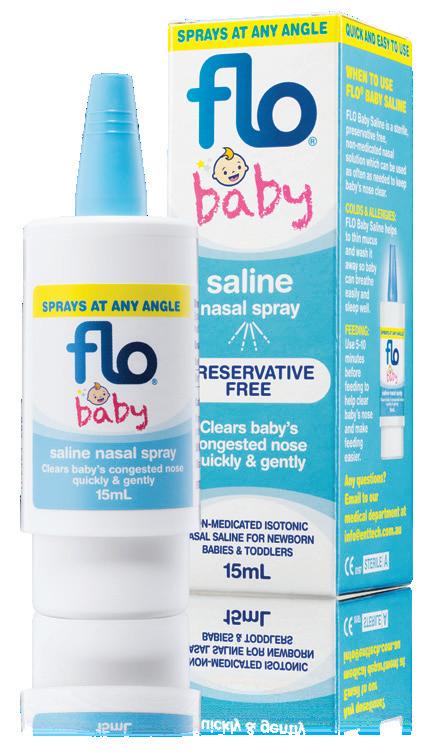

SPRAYS AT ANGLEANY Effective relief from a blocked nose CS Health (Pty) Ltd E-mail us on info@cshealth.co.za for your discount coupon for your next purchase Visit our Facebook Page www.facebook.com/cshealthsa Available from Dischem, Baby City, Mr Price Baby and leading Pharmacies. Always read the label. Follow directions for use. If symptoms persist, consult your health professional. the ideal natural solution for a blocked nose for you and your baby Flo for your baby Flo Baby for babies’ blocked nose esp. before feeding and sleeping Flo for you Flo Saline Plus for a blocked nose during pregnancy or whilst breast feeding. Natural & gentle formulation Contains extra minerals required in the nose Preservative-free isotonic solution No stinging or burning
3. CHALLENGE CARE RECOMMENDATIONS
IF YOU AREN’T HAPPY.
There are likely to be many other options available to you, such as where you may give birth, or how you want to be cared for during labour.
During antenatal appointments, be sure to pause, think and ask about benefits, risks and alternatives to the care being proposed. Research shows how important choice and personalised care are for expectant parents who want their voices and preferences to be acknowledged, and to receive consistent advice.


If you have concerns over a suggestion your care providers have made, or have questions, don’t be afraid to ask. If you prefer, take your birth partner with you, who can empower you to ensure your voice is heard. After all, care providers are duty-bound to ensure you make fully informed choices.
4. DON’T ALWAYS LISTEN TO YOUR FRIENDS AND FAMILY.
Once people hear you have a baby on the way, it seems everyone feels the need, without asking, to tell you the full (and often graphic) details of their own children’s birth. But it’s perfectly acceptable to politely change the subject if you don’t want to listen, or if hearing these stories makes you nervous or worry.
It’s also worth remembering that each person has a different labour and birth, even with their own children—so what was true for someone else is likely not to be the same for you.
While it can be helpful for some people to debrief after the birth, it’s okay to avoid hearing this yourself if it makes your nervous, and maybe suggest they speak with a professional about their experience instead of telling you.
5. VISIT YOUR PREFERRED PLACE OF BIRTH.
Many maternity units are now opening up their doors to tours and informal visits—and those that aren’t yet, are doing this virtually.
Becoming familiar with where you may give birth—even down to where you may park on the day— can help you feel more confident about giving birth. It may also remove some of the unknown, helping you regain a sense of control, which in itself is linked to a more positive birth experience.
For those planning a home birth, speak to your midwife about how you can improve your space to facilitate the most safe and positive experience. For one of the most important days of your life, visualising where this will take place ahead of time can help you feel more confident and in control.
Ultimately, it’s important to remember that no one can predict exactly how your labour and birth journey will go. Even after heeding the above steps, there’s always a chance you may need to consider a plan B, C or even D. But no matter what, remember you’ve done your very best, and you’re not likely to repeat this exact experience the next time.
PREGNANCY Preparing
for birth
20 Mother & Child Issue 26
Claire Parker is a senior lecturer in Midwifery at Anglia Ruskin University
BIEDOUW VALLEY ROOIBOS

+27 27 482 2832 | www.biedouwvalleyrooibos.co.za
Biedouw Valley Rooibos Tea is cultivated on the plateau of the surrounding Cederberg mountains which overlooks the Biedouw Valley, world famous for its breathtaking wild flowers. Growing in its original habitat at an altitude of 900 - 1,000m, in perfect sandstone soil and unpolluted air, our tea has a richer flavour.
Biedouw Valley Rooibos was formed in 1997 to produce estate Rooibos Tea and is run by the Van der Merwe family producing, marketing and distributing this unique product.


Biedouw Valley Rooibos is proudly a leader in the field of quality, taste and hygiene to ensure the best quality to tea drinkers world-wide.

Fennel has been used as a natural medicine for centuries with its properties been having said to help prevent and relieve muscle spasms, improve digestion, flatulence and stomach cramps. Many of the symptoms are associated with colic in infants. Chamomile is a mild sedative, which helps improve your kid’s sleep quality. Some parents also use Chamomile tea for teething or to treat a colicky baby, as it helps in easing tummy pain.
To order, email sales@biedouwvalleyrooibos.co.za
“Say ma-ma”
By Michelle St Clair & Vanessa Lloyd-Esenkaya
Here’s
When should your child start speaking?
what parents should look for if concerned about language development
BABY Speech
22 Mother & Child Issue 26
For the children themselves, it can be very frustrating when they’re unable to express their thoughts

Speech BABY
Issue 26 Mother & Child 23
Children develop at varying rates in all sorts of ways, from when they take their first steps to when they understand that their own perspective may be different to someone else’s.
Language is no different, so there’s no set age at which a child should start talking.
There are, of course, certain milestones that most children achieve in their communication at certain ages, and it can be a daunting time for parents who see their friends’ children begin speaking earlier than their own. For most children, this is likely just the natural variation in when children achieve their own milestones. For others, this could be a temporary language delay that will eventually see them catch up without any intervention.
But for some children, a delay in early language milestones may be the first sign of a long-term disorder of language development. So what should parents look for if they’re concerned about their child’s language development?
IT’S NOT ALL ABOUT SPEECH
Generally, children begin to babble from around the age of 6 months and say their first words between 10 and 15 months (most start speaking at about 12 months). They then begin to pick up increasing numbers of words and start to combine them into simple sentences after around 18 months.

It’s important to note that language is not just the sounds we make with our voice. The idea that language is only speech is a huge misconception. We take it for granted, but understanding the language used by those around us is a very complex task. We need to have knowledge of the words being used, have a concept of what those words mean in different contexts, and understand the meaning of a sentence based on the order of the words. These are called receptive language skills.
Parents should be aware that from the earliest stages of language development, children understand more than they can communicate themselves. Indeed, it’s through children’s understanding of the language surrounding them—in other
words, what parents, siblings and caregivers are saying—that they build their own language skills.
Some conditions affecting speech, such as a stutter, are highly noticeable. In contrast, the problems children have when they aren’t developing language in the typical fashion can sometimes be hidden. Sometimes seemingly complex instructions can be readily understood due to the overall context. For example, telling your child to “go and get your coat and boots on” may be understood due to the context of getting ready to leave the house and understanding the words “coat” and “boots”.
Other instructions with a less clear context, such as “get the blue and black book that is under the blanket on the chair”, require a better understanding of the language itself and may be harder for children with language difficulties. It’s often difficult to identify an underlying language problem in many children, particularly when they’re good at using the social context.
BABY Speech
24 Mother & Child Issue 26
For some children, a delay in early language milestones may be the first sign of a long-term disorder of language development.
Promotes Healthy Lactation




















































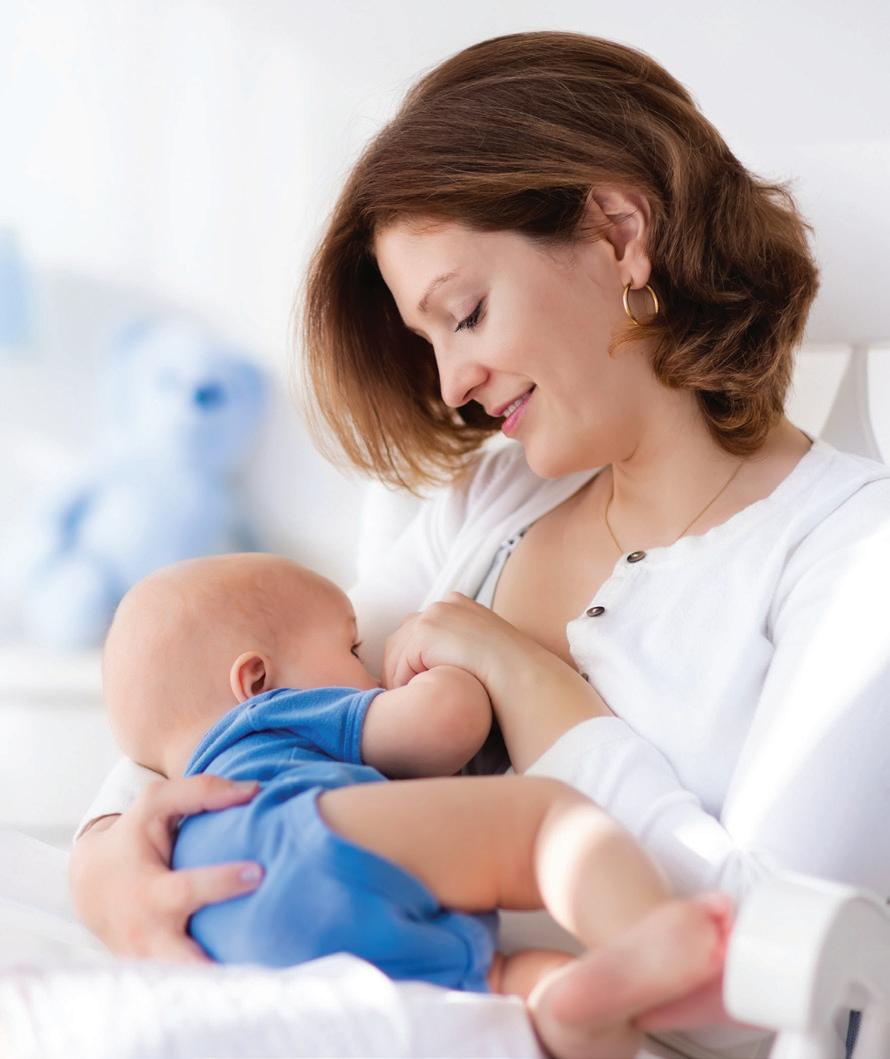






































































































The Himalaya Drug Company (Pty) Ltd www himalayawellness.com
complete digestive tonic A clinically proven formulation that helps babies eat well and digest well.
The
Promotes healthy breast milk production and restores postpartum health Tiny Hands, BIG Love Tiny Hands, BIG Love STRENGTHENS THE BOND BETWEEN MOTHER & BABY NATURAL GALACTAGOGUE
WHEN TO SEEK HELP
For the children themselves, it can be very frustrating when they’re unable to express their thoughts or when they don’t fully understand what’s going on around them. A child who has temper tantrums but finds it hard to say why they’re distressed may have an underlying language difficulty. This may signal language delay, which is not uncommon. If you notice that your child finds it hard to follow simple instructions, this could be due to a difficulty in understanding language, which may indicate a more persistent problem.
About 70% to 80% of children with expressive delays catch up with their language by the age of 4. For others, this may highlight developmental language disorder (DLD), a long-term impairment of language skills. Even experts find it difficult to tell language delay and disorder apart before primary school. DLD is thought to affect 7.6%, or one in 15 children. DLD can affect expressive and receptive language skills and it lasts into adulthood.
All children have the capacity to thrive, but children with DLD may need extra support to achieve their full potential. Rather than ‘wait and see’, it’s a good idea to seek professional advice, particularly if your child is between 18 and 30 months and appears to have problems understanding language, uses very few gestures to communicate, and is slow at learning new words. The first step is to contact a local speech and language therapy service.
BOOSTING LANGUAGE SKILLS
Language is flexible and there’s no such thing as too much language input. Whatever level of language development your child has, there are always things you can do to boost their language skills further.

For example, when you’re playing with your toddler, watch where their eyes are going and label the things they see. If they say “horse running”, you can build on this with: “Yes, the horse is running! Where is he running to?” This helps children learn new words and concepts as well as learn about how better to structure sentences.
Reading books together is great for building language skills, as you can find new words in books for things not often seen in real life, such as zoo animals. It’s also valuable in promoting attention and listening skills. Be sure to ask lots of ‘why’ and ‘how’ questions to get more language out of your child, rather than questions that can be answered with a “yes” or “no”. Watching videos or children’s television can be similar, but only if you’re watching and discussing the videos or shows together.
It sounds simple, but having back-and-forth conversations with your child can help enormously. Not only can this be incredibly rewarding socially but it can help build and expand their language and wider social communication skills. Try to build this into regular activities such as talking with your child while doing the supermarket shop.
Michelle St Clair is a senior lecturer in Psychology, and Vanessa Lloyd-Esenkaya a postdoctoral research associate in Psychology, both at the University of Bath
BABY Speech 26 Mother & Child Issue 26







BABY Development 28 Mother & Child Issue 26
Get a move on!
Infants
By Danae Dinkel
When people set personal fitness goals and establish their physical exercise routines, there’s a group of cuddly individuals often left out... infants!
Historically, infant active movement has been perceived as a personality characteristic. It’s assumed that infants are plenty active on their own, without needing adult intervention to encourage movement. However, research is revealing that the choices, behaviours and everyday habits of adults have a big influence on how much infants move.
I’m a physical activity teacher and researcher. For the past five years, I’ve conducted several studies exploring infant movement, seeking to identify what supports the development of lifelong physical activity habits.
I’ve learnt that many parents and other
caregivers want to encourage infants to actively play and move. However, they often don’t know for sure how much physical activity an infant needs, nor do they often recognise how their own behaviours may be limiting an infant’s physical activity. Fortunately, there are several easy—and fun—ways to add more physical activity to an infant’s daily life.

WHY INFANTS NEED MOVEMENT, AND HOW MUCH
Study of infant movement is a relatively new field, so there’s still much to learn. However, one of the field’s foundational studies was published in 1972, and it found that increased infant physical activity can improve motor development. More recent research shows that increased infant movement can improve bone health and personal-social development: skills related to improving their independence or interacting with others, such as feeding themselves or waving goodbye.
need lots of active movement and play —and there are simple ways to help them get it
Development BABY
Issue 26 Mother & Child 29
The World Health Organisation (WHO) suggests infants should be physically active several times a day, especially through interactive floor-based play. Similarly, the American Academy of Paediatrics recommends opportunities for interactive play throughout the day, along with at least 30 minutes of ‘tummy time’ with an adult.
Yet, half the parents participating in our research reported they hadn’t heard of these recommendations and did desire more specific guidelines on encouraging active play.
WHAT ARE THE BARRIERS?
While research is ongoing, I and other researchers have identified three major barriers to infant active movement: screen time, restrictive devices and ‘gendered play’—gender-related stereotypes, beliefs and practices in relation to how children play.

The American Academy of Paediatrics and other organisations discourage allowing infants any screen time other than video chatting. However, a recent review found that children ages 0 to 2 years may be getting between 36 and 330 minutes of screen time per day. A 2019 analysis of data gathered between 2008 and 2010
found that children’s screen time increased from 53 minutes a day at age 1 to more than 150 minutes per day by age 3, which suggests screen time habits begin taking shape at very early ages.
Furthermore, the WHO suggests infants should spend no more than one hour at a time in a restrictive device. Yet, many adults overuse car seats, strollers, high chairs or other ‘containers’ that constrain movement.
Research into adult physical activity consistently shows that males are more active than females, regardless of age. Our research suggests this gap may begin during infancy and be related to gendered play.
In our 2020 study exploring infant motor development in relation to parents’ promotion of play, we found that parents of male infants more often encouraged play that promoted gross motor skills: movement involving the large muscles that support activities like walking, running or kicking. Parents of female infants more often made statements that promoted fine motor skills, which involve smaller movements of the hands and arms, and support activities like reaching and grasping.
We found that females had significantly higher fine motor skills than male.
We’ve documented additional barriers as well, including time spent eating, tending to the infant’s sleeping schedule or other care needs; a need to baby-proof surroundings; or weather and other environmental concerns.
HOW TO SUPPORT INFANT MOVEMENT
Fortunately, there are many ways to break down these barriers—and none requires buying expensive baby gear.
Encourage tummy time
Two to three times a day, place an awake infant on his or her tummy for a few minutes, and then play and engage with them. This is the primary method of supporting movement for infants who are not yet mobile.
Explore movement together
Doing activities that help infants learn about movement, such as bouncing your child on your lap and singing and playing pattycake or peekaboo, can encourage infants to move. Infants also watch what the adults around them do— including how active they are!
BABY Development 30 Mother & Child Issue 26



































FOR NAPPIES, LINEN & CLOTHING POWER • At selected outlets: • STERILISES • WHITENS • DEODERISES • REMOVES ALL STAINS Soak overnight 2 teaspoons to 7 litres warm water ), Rinse and Dry. “NOT JUST FOR NAPPIES” For use on all your favourite whites. Uniforms, clothing, tablecloths, linen & more. (popular with restaurants, hotels & B&Bs) Email: info@sterinappi.co.za • www.sterinappi.co.za TRUSTED FOR OVER 40 YEARS FOR NAPPIES, LINEN & CLOTHING POWER FORMULA FR EE At selected outlets: • STERILISES • WHITENS • DEODERISES • REMOVES ALL STAINS Soak overnight 2 teaspoons to 7 litres warm water ), Rinse and Dry. “NOT JUST FOR NAPPIES” For use on all your favourite whites. Uniforms, clothing, tablecloths, linen & more. (popular with restaurants, hotels & B&Bs) Email: info@sterinappi.co.za • www.sterinappi.co.za PHOSPHATE • FREE • Steri Nappi Steri Nappi TRUSTED FOR OVER 40 YEARS FOR NAPPIES, LINEN & CLOTHING POWER FORMULA PHOSPHATE • FR EE • At selected outlets: • STERILISES • WHITENS • DEODERISES • REMOVES ALL STAINS Soak overnight ( 2 teaspoons to 7 litres warm water ), Rinse and Dry. “NOT JUST FOR NAPPIES” For use on all your favourite whites. Uniforms, clothing, tablecloths, linen & more. (popular with restaurants, hotels & B&Bs) Email: info@sterinappi.co.za • www.sterinappi.co.za
In one of our studies, many mothers reported being physically active themselves, but few realised it was important to role-model regular physical activity for infants.
CREATE SAFE PLAY SPACE
As infants learn to move and get better at controlling their feet and hands, even normal household objects—such as small items they can shove into their mouths and choke on—become potential hazards requiring adult intervention. Protect them by clearing clutter and removing potentially dangerous objects from a space that’s at least 1.5 by 2 metres.
No equipment? No problem! It doesn’t take new or costly gear to encourage infant movement. Use things around the house: Pillows can be piled into a ‘mountain’ to crawl over. Mixing bowls and measuring cups can double as toys.
Adults can also turn their own bodies into an infant climbing gym. For example, sit on the floor with legs spread out and encourage your infant to pull him/herself up or crawl over them.

Get outside
It’s recommended you take your infant outside two to three times per day, weather permitting. Our research suggests children are more physically active when they play in parks, playgrounds and other open areas that allow for gross motor activities like crawling and walking. The benefits of active outdoor play may also include improved self-control, attention, communication and social development.
Finally, it need not be up to parents alone. Research has linked social support by siblings and peers, childcare providers and teachers with increased physical activity in children.
Trust me, as both a physical activity researcher and a working mother of three—including an 11-month-old just learning to walk—I can attest that when adults and older children play with my baby, it gives me an opportunity to accomplish something on my to-do list, and provides my infant with more opportunities to enjoy moving.
Danae Dinkel is an associate professor in the Department of Health and Kinesiology at the University of Nebraska Omaha
BABY Development 32 Mother & Child Issue 26
Two to three times a day, place an awake infant on his or her tummy for a few minutes, and then play and engage with them.




























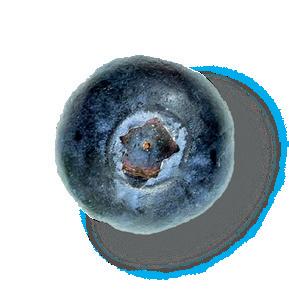



TODDLERS Behaviour 36 Mother & Child Issue 26
Emotional roller coaster
By Rochelle Matacz & Lynn Priddis
Being able to understand the world from the child’s perspective helps a parent anticipate, interpret and respond to the child’s behaviour

Yes, the ‘terrible 2s’ are full-on, but let’s look at things from a child’s perspective
Behaviour TODDLERS
Issue 26 Mother & Child 37
eet Eli. He entered the second year of his life with gusto and now, aged 18 months, he’s discovering new things every day—including ideas he wants to try out immediately. Like, right now. Waiting is not an option.
Combined with his passion for life, he often becomes emotionally overwhelmed and erupts into frequent meltdowns. Words and phrases like “no”, “do it myself” and “mine” are used often.
Sometimes the smallest thing ends with Eli kicking, biting and crying. Although he’s still developing a command of words, he shouts “I don’t love you, Dad!” with devastating accuracy. These outbursts happen at home and out in public.
Research shows tantrums occur in 87% of 18- to 24-month-olds, 91% of 30- to 36-month-olds, and 59% of 42- to 48-month-olds —often on a daily basis.

The ‘terrible 2s’ may sound accurate, but branding toddlerhood (18 months to 36 months) this way is an injustice to this group. The generic label fails to grasp the huge developmental growth happening at this age. It also fails to celebrate the developing emotional life of a toddler, at once complex, multifaceted and exhilarating.
WHAT’S GOING ON?
Eli is at a ‘developmental touchpoint’, where a unique surge in capacities is coupled with behaviour falling apart. At this age, children begin to establish independence while simultaneously needing to learn ways of coping with intense feelings such as fear, anger, frustration and sadness. Researchers are still discovering what a normal trajectory for emotional regulation development looks like, and what may help or hinder it.
But it can be challenging for parents to support their toddlers through this stage.
Focusing solely on a toddler’s behaviour fails to capture the significant role sensitive caregiving plays in social and emotional development in the early years.
A core component of sensitive and responsive parenting is a parent’s capacity to put themselves into the mind of their very young child and understand the child’s behaviour has meaning and is driven by internal experiences such as feelings, thoughts, desires and intentions.
A CHILD’S-EYE VIEW
Being able to understand the world from the child’s perspective helps a parent anticipate, interpret and respond to the child’s behaviour in ways that build a child’s capacity to regulate their emotions.
Eli’s dad didn’t experience tantrums with his first child, who had a calmer disposition, so he finds Eli’s emotional outbursts hard to tolerate. He becomes angry when Eli refuses to do what he’s told and yells at him to “stop it!”. This frightens Eli, who sometimes retreats and sometimes escalates in his distress.
Eli’s dad is unaware of his toddler’s internal experiences and is confused by his own ‘out-ofcontrol’ feelings when parenting him. Frequent emotional outbursts, coupled with an authoritative parenting style, place children at risk of developing more serious emotional and behavioural problems.
Eli’s dad needs to understand that his primary role at this stage is to put his child’s experiences at the centre of his mind. This requires him to try to make sense of what Eli is communicating about himself through his behaviour and to respond in a sensitive way. This can help a child like Eli not be overwhelmed by intense feelings.
MIntense, uncontrolled feelings and defiance are normal at this age.
TODDLERS Behaviour 38 Mother & Child Issue 26
KuraFlo® – so much more than Seasonal
Hay fever, allergies, dry coughs, asthma… these are the conditions that are most experienced during Spring and Summer seasons. Because of the heat and humidity, there is a lack of air movement which can cause pollutants like dust and pollen to be trapped in the airways. And although flu is prevalent in cold weather, we are also still susceptible to flu because of sudden temperature changes in Summer when we move from air-conditioned rooms to outdoor heat, or sudden rainstorms.
With a higher salt quantity in the product than that of the body, hypertonic saline draws fluid from the inflamed, swollen lining of the nose, sinuses, larynx and bronchi to help open the airways. This then helps wash out those trapped particles.
In addition, we have also launched our new anti-inflammatory, antibacterial, antiseptic Skin Healing Cream to help for those skin irritations, rashes, mosquito bites, cuts and sunburn.
Helping you Breathe Better & now Feel Better too!


www.kuraflo.co.za Follow us on
Independent Pharmacies
3 GUIDELINES FOR
PARENTS:
1. Be aware of your own responses.
Tantrums can be emotionally activating for parents. Being aware and making sense of your own feelings will help you respond sensitively to your child’s distress. When Eli’s dad makes sense of his struggles with managing anger, he’s calmer—enabling him to focus on Eli’s emotional experiences.
2. Identify and validate your child’s difficult feelings.
Young children need help from their parents to recognise that the feelings they’re expressing through their behaviours are just that: feelings that will pass in time. They need help to name them, work out what’s causing them and figure out what may help.
3. Search for underlying meaning. Remember not to take emotional outbursts personally. Viewing a tantrum as a means of communication helps parents consider the likely causes of a child’s distress and to think through possible solutions.
MAKING CHANGES
With new insights, parents like Eli’s dad can can help their child put themselves back together again after emotional outbursts, which may be less frequent. With consistent support, toddlers can learn to tolerate frustration, gain a sense of control of strong feelings, and find words to express what’s happening inside them.

Parenting a toddler is no easy task. Today’s parents have the
advantages of remarkable leaps in neuroscientific and developmental knowledge. However, these can be difficult to access and even more difficult to put into practice. Unwittingly, we can fall back into the familiar ways we were parented, or we may attempt to try to do the opposite of how we were parented— only to find we have lost direction. Investment in early intervention programmes for everyone, or at a targeted level
where the parent-child relationship is in trouble, could provide the building blocks for lifelong emotional well-being for families and for society.
Rochelle Matacz is manager of the Pregnancy to Parenthood Clinic at Edith Cowan University. Dr Lynn Priddis is a clinical and counselling psychologist with the Lifespan Psychology Centre in Western Australia.
TODDLERS Behaviour
40 Mother & Child Issue 26











011 027 5010 | 063 674 5778 info.fourways@curro.co.za 32 Swallow Drive, Norscot Slopes, Fourways ENROL NOW for 2023 From 3 months to 5 years Small class sizes Internally developed play-based curriculum On-site kitchen with meals included in the school fees Brand-new refurbished baby hub with tranquil and homely learning spaces
New-school ideas

Why—and how—we should make our classrooms active learning spaces
Experts around the world have concluded that the traditional classroom is actually a passive space where students listen without interacting.

EDUCATION Classroom
42 Mother & Child Issue 26
MATHS ENGLISH
Your child can shine


The KUMON MATHS & ENGLISH PROGRAMMES are designed to give your child a great head start.
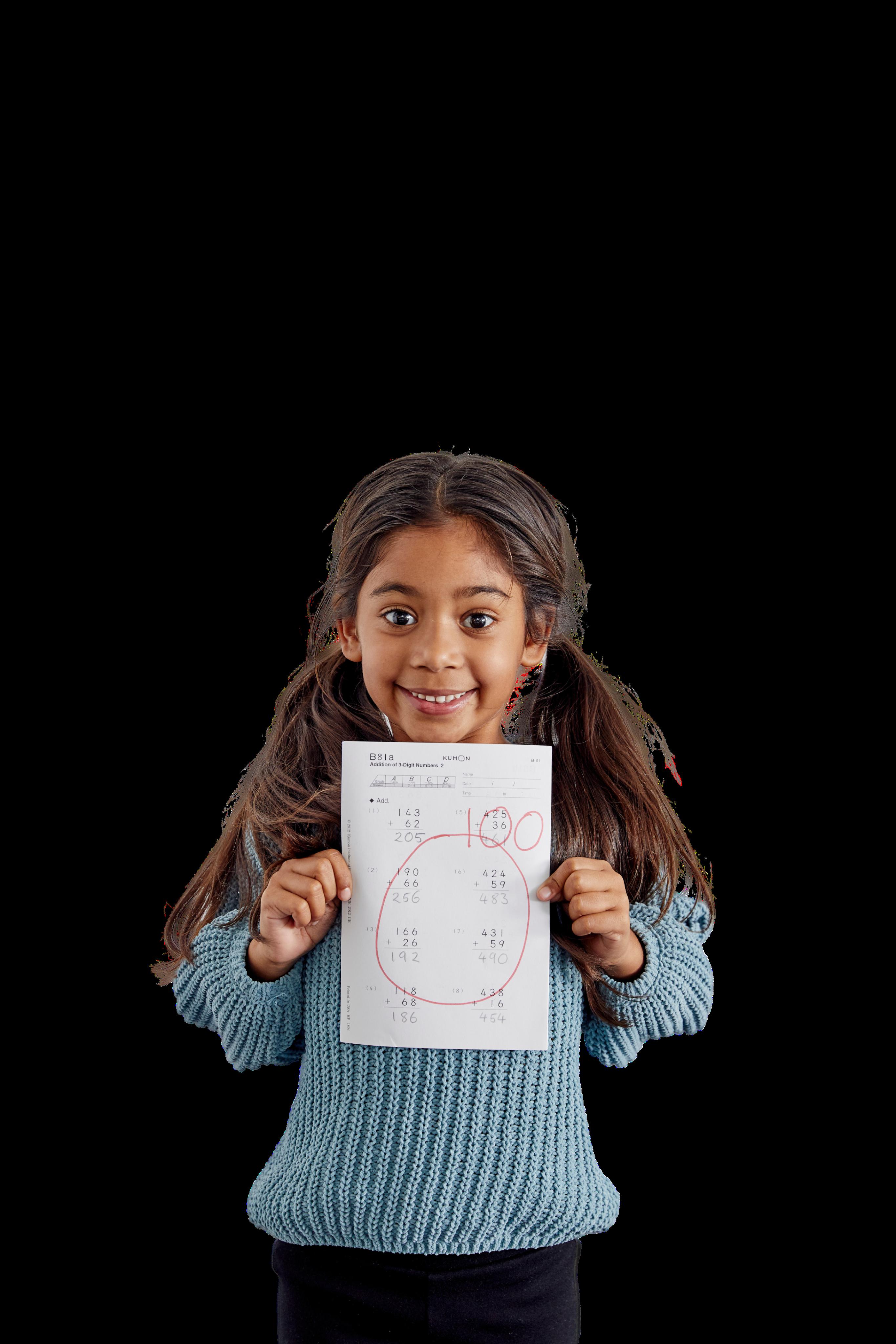
Kumon helps children of any age and any ability to shine. We aim to give our students the tools they need to enjoy learning and thrive academically.
Our programmes introduce the fundamentals of numbers and reading through fun, colourful worksheets and Instructor support.
Children are encouraged to work in an attentive and thoughtful way to develop concentration, attention span, and good learning practices ready for school and beyond.
Visit our website to find the Centre in your area and enrol today.
Developing children of all ages and abilities.
www.kumon.co.za

South Africa’s educational system faces many challenges. As technology, innovation and youth culture have advanced to the stage that children now have access to smart devices that can aid them immeasurably, they’re subject to the practices and systems of education and schooling that were designed for a different era.
The consequences of the pandemic amplified the need for change. For much of 2020 and 2021, students had to conduct their studies remotely, causing the need for traditional models to be broken and highlighting the fact that online learning can not only empower students but instil in them the desire to take charge of their own education.
The need has arrived to provide students with a holistic education that uses technological advancements, enhances learning spaces, and encourages lateral thinking and teaches skills they can take forward into the everchanging future.
It’s in this spirit that Shaun Fuchs, entrepreneur and long-time educationalist, launched Centennial Schools this year. He aims to
address the needs of modern school students in this new era of educational change. “It’s becoming more difficult to find genuinely revolutionary reform at the system level in existing schools,” he says.
In a stark break from educational norms, the schools will address vital aspects hampering South Africa’s current education and apply new approaches in teaching.
One of the core elements that needed to be addressed was the spaces in which students learn. Traditional school classrooms all look the same: rows of desks and chairs facing the blackboard,



a teacher’s desk and chair at the front. It’s how teaching has taken place for generations—but do these spaces actually help students learn?
The short answer is no. Experts around the world have studied classroom setups and concluded that the traditional classroom is actually a passive space where students listen without interacting. Human beings by nature are not passive creatures, yet children are expected to learn while sitting passively for hours on end. Simple things like allowing students to stand while working, or face their peers in a classroom, already increase their active learning.
EDUCATION Classroom 44 Mother & Child Issue 26









Fuchs says. “All schools can implement active learning spaces to a certain extent. Taking active steps toward arranging the desks in a circle so that students can make eye contact with each other; whiteboards and moveable chairs; in a classroom with grouped tables instead of rows, teachers can move around freely to answer students’ questions during class.”
Even these low-tech measures have reported significant improvement in student performance. “Studies show that students in active learning spaces outperformed those in traditionalstyle classrooms when the same course was taught in both settings,” Fuchs reveals. “Our school has taken the concept of active learning to new heights by establishing
Learning Hubs that are fluid, active and collaborative.”
He explains: “We have seamlessly integrated technology into spaces that are designed around teaching and learning, giving teachers and students the tools they need to succeed in a physical setting that promotes collaboration and supports multiple learning styles. While connected devices are an important part of modern learning environments, audiovisual equipment and even classroom furniture are essential to creating spaces that are conducive to teaching that focuses on futureready skills.
“Perhaps the simplest example of this is the standing desk, which gives students a break from sitting all day, heightens alertness and even helps burn calories. In the business world, adults move around throughout their workday, going from ergonomic chairs in their offices to conference tables and quiet corners, depending on the task at hand. It’s important that our students be allowed to do the same: for example, they have a dedicated workspace, and instead
of students moving every period, the teachers move. This not only saves teaching time, it also keeps students focused.
“Over and above that, our furniture options also come equipped with USB or three-prong charging ports, helping our students keep their devices powered up throughout the day,” he adds.
• And these Learning Hubs have paid off, as evidenced by a survey conducted by the school:
• Up to 70% of the students reported better grades, better attendance, or improved creativity in newly designed active learning environments.

• Students who use standing desks reported a 17% increase in calorie expenditure compared with those who use traditional desks.
• 70% of parents say standing in the classroom has a positive impact on their child’s behaviour.
“Classrooms should always be attractive, inviting environments that children want to spend time in,” Fuchs concludes.
EDUCATION Classroom
“Setting up your classroom for active learning is actually quite easy and does not require expensive, integrated technology,”
46 Mother & Child Issue 26












Life Kingsbury Hospital Wilderness Road, Claremont, 7700 | Tel: 021 670 4000 www.lifehealthcare.co.za We provide a safe and caring environment to the children in our care For more information or doctor contact details, please contact 021 670 4000 or visit the Life Kingsbury Hospital webpage. Ears, Nose & Throat Specialist Dr Gary Kroukamp Paediatricians Dr Allan Puterman Dr Hedi van der Watt Dr Lara Smith Dr Rabeen Lutchman Paediatric surgeon Dr Shalin Singh Life Kidz paediatric unit 021 670 4195 24-hour emergency unit 021 670 4039 Our paediatric unit offers specialised nursing care, a general ward, two ICU beds and two high care beds - equipped with leading diagnostic and monitoring facilities. Providing the best possible environment for our youngest patients. 7303-Life Kingsbury-Paediatric Half page advert.indd 1 2022/07/15 12:19 BABY MASSAGE · SOCIAL INTERACTION · MUSIC PROGRAMME · PERCEPTUAL DEVELOPMENT YOUR BRANCH NEAR SENSORY MOTOR ACTIVITIES · CREATIVE MESSY PLAY · FINE & GROSS MOTOR ACTIVITIES BABIES NURTURING 6 WEEKS 4 YEARS YOUR CHILD’S DEVELOPMENT FIRST CLASS IS FREE! TO VISIT TO FIND A YOU! OUR WEBSITE Parent & Child Workshop BABY MASSAGE · SOCIAL INTERACTION · MUSIC PROGRAMME · PERCEPTUAL DEVELOPMENT YOUR BRANCH NEAR SENSORY MOTOR ACTIVITIES · CREATIVE MESSY PLAY · FINE & GROSS MOTOR ACTIVITIES BABIES NURTURING 6 WEEKS 4 YEARS YOUR CHILD’S DEVELOPMENT FIRST CLASS IS FREE! TO VISIT www.toptots.co.za Join the fun! TO FIND A YOU! OUR WEBSITE Parent & Child Workshop
Fill their hearts
6 ways fathers can share love and connection with their babies, preschoolers and young children
 By Nikki Martyn
By Nikki Martyn
Fathers offer children diverse experiences and can positively impact their long-term development and well-being.
DAD MATTERS Relationships
48 Mother & Child Issue 26



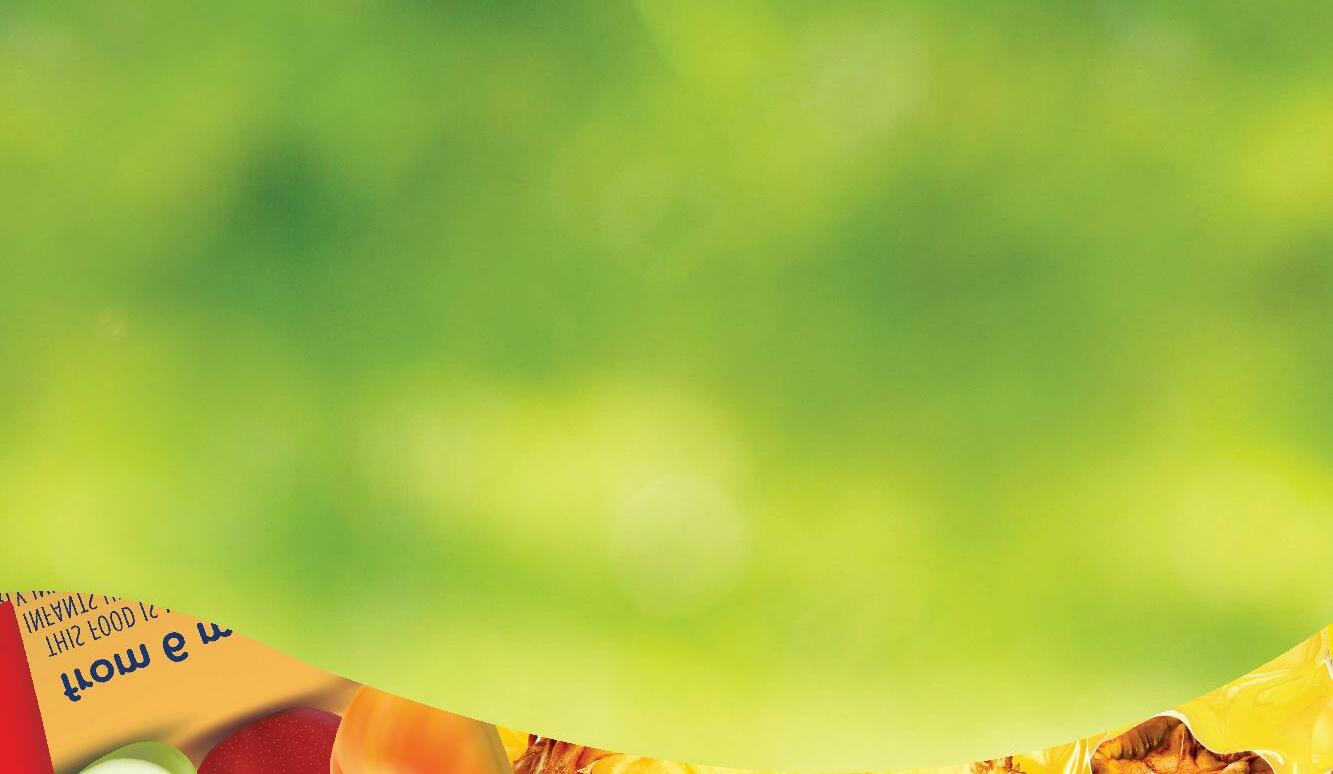



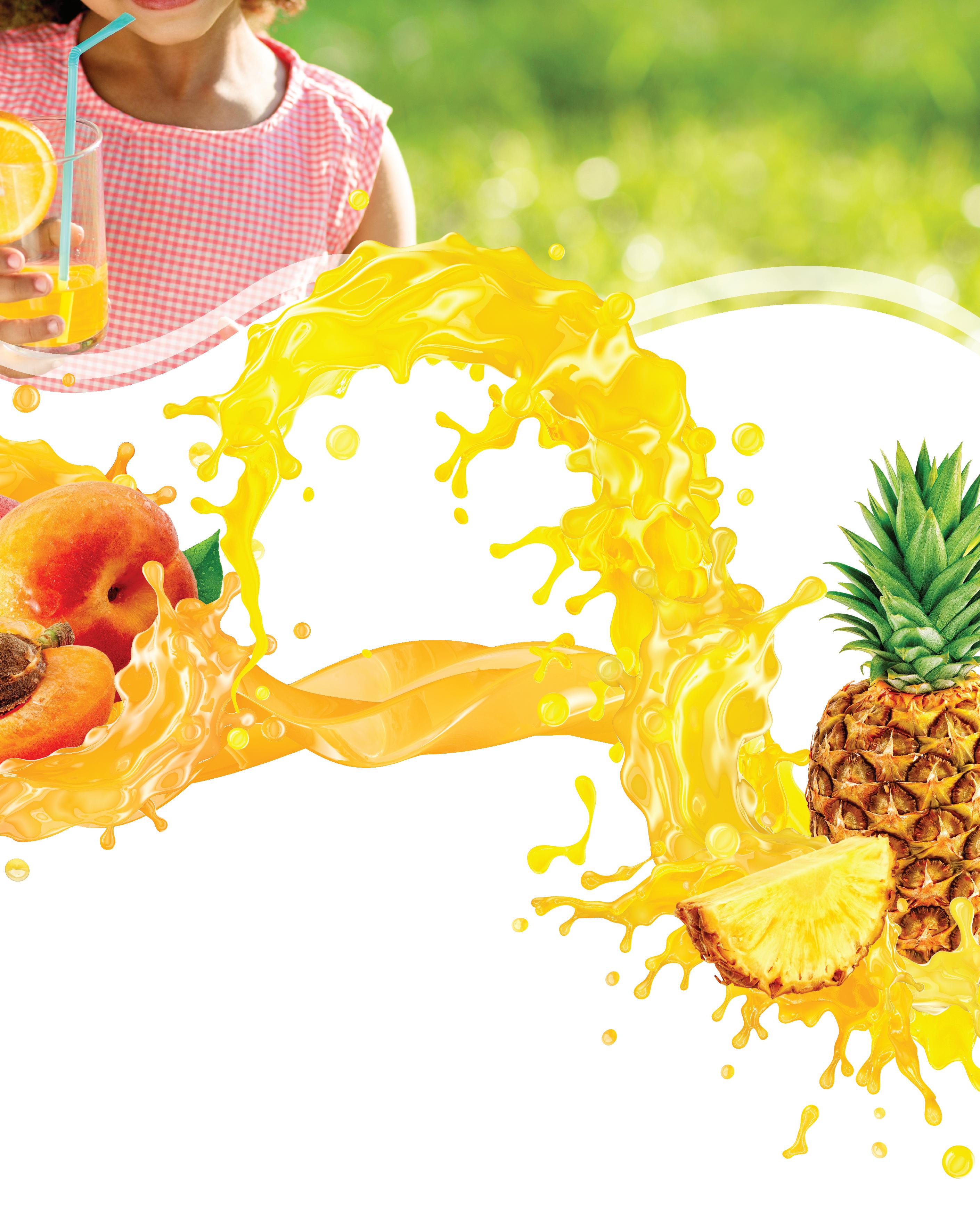












CHILDREN’S GROWTH AND DEVELOPMENT
Fathers offer children diverse experiences and can positively impact their long-term development and well-being.
From birth, children are learning how to physically engage with the world and move their bodies to make things happen. Through attuned physical and emotionally responsive caregiving, they experience a secure base and develop a sense of the world as safe. They feel seen and heard. This allows children, in turn, to grow up to support the development of meaningful, loving and trusted relationships. For a child, this depends on experiencing a caregivers’ vulnerable loving self, who shows up and is emotionally present with them.
As toddlers and younger children begin to explore the world more independently, they enjoy engaging in rough-and-tumble play and learn boundaries, how to follow rules and social-emotional skills.
Research has found that fathers involved with their children’s lives tend to ask children more questions, significantly increasing the child’s communication skills and language development.
Fathers often push their children to get through difficult feelings when they want to quit, and in so doing help them build resilience. They support thinking and problem solving, often modelling and explaining the reasoning or decisions for completing a task. This supports the development of critical thinking and executive function skills.
Whether you’re a father, parent or caregiver, or are contemplating becoming one, here are some ways to share love and connection with your young child:
1. LISTEN
Children are learning intensively from birth to age 3, in ways parents may not imagine. Create space and time to watch, wait, wonder and
listen to how your child perceives the world. Allow yourself to feel and explore the magic of the world through your child’s eyes. This will provide your child the experience of feeling seen and heard, to know they’re important and worthy of love. This will help you form a trusted and secure connection with them.
2. SHARE
Create trust by sharing yourself: who you are, what you love, your history and childhood. Children seek connection from birth, well before they can talk. Communicate and talk with your baby and young child, and they will learn about the world. As humans, sharing our feelings and experiences, and taking the risk of being vulnerable, is important to building meaningful, loving connections. There’s strength and beauty in the vulnerable gift of yourself.
3. PLAY
From infancy, children learn through play. It’s how they understand, process and make meaning of the world. Play is fun and engaging and it allows for attuned, loving and responsive connection. Engage and play with your child in developmentally appropriate ways. Consider something that interests your child, and also share what you enjoy with them. Sharing play can help build a loving, trusting relationship that will last a lifetime.
4. READ
Reading and sharing stories (real or imagined) is a wonderful way to connect and share a loving snuggle time. This is important for children to create a love of reading and develop listening, critical thinking and literacy skills and experience a calm relaxing time together, feeling secure and connected. You may also discover brilliant magical moments
when your child shares their world with you.
5. ADVENTURE AND EXPLORE
When children are preschoolers and older, imagining a world and building a fort is exciting. This kind of open-ended play using simple objects from around the home develops spatial reasoning and problem-solving skills. Pitching a tent or gazing at the moon allows children to see, hear and experience the world from a new perspective. Going on a nature hunt to discover the many facets of the outdoors allows children to understand the world and allows you to share your interests and knowledge with them. For example, finding a snail can be one of the most brilliant events: You could explore how they live and move, observing the snail’s shell. You may discuss fascinating insights about shapes, or patterns in nature. Share in the awe and wonder.
6. MODEL LOVE
Be intentional about how you live your life, what you show your child and how you treat the people you and your child love. Remember, they are watching and learning from you all the time. Be the best dad or caregiver you can be.
Love gets under your child’s skin and lives within them forever. It fills their hearts and teaches them they are always enough—and allows them to confidently sparkle and shoot for the stars. The ripple effect of love is incredible. Create a ripple with your child and see what beauty and wonder evolves.
Nikki Martyn is the programme head of Early Childhood Studies at the University of Guelph-Humber
DAD
MATTERS Relationships
50 Mother & Child Issue 26
Create space and time to watch, wait, wonder and listen to how your child perceives the world.
Homeschooling
starts with impaq
No one knows your little one better than you do. So, who better than you to teach your child?
Homeschooling allows you to tailor your child’s learning to suit their individual needs and foster a love for learning in a safe, comfortable environment.

Impaq provides you with everything you need to make a success of your child’s learning journey. From the basics of reading and writing all the way through to helping them to prepare for the final Grade 12 examination, we make learning at home easy!

Lesson material (printed or e-books)
Our CAPS-aligned lesson material makes learning fun. The lesson material is developed by experts in their relevant fields and is based on the latest insights from the learning sciences.
Facilitator's guides (printed or e-books)
You will receive everything you need to support your child, including a subject plan, suggested timetable, and lesson guidance.
Support services
We will guide you and your child every step of the way with access to our dedicated education specialists.
Live Subject Guidance Sessions
We o er Subject Guidance Sessions, presented by education specialists, to provide useful information and to help your child grasp more di cult concepts.
Assessment elements and services
You will receive all the formal assessment components you need to evaluate your child and monitor their progress.
Optimi Learning Portal
You will receive access to the Optimi Learning Portal, designed to support you and your child’s homeschooling and distance learning journey. The Optimi Learning Portalo ers crafted digital resources (including over 900 educational videos), personalised calendars, mark capturing, report generation, progress tracking, and more.
Impaq has been helping moms teach their children at home for over 20 years. We are South Africa’s largest home education curriculum provider and have helped more than 30 000 learners study at home this year.
Get started with Impaq. from 1 September 2022. Register online for 2023
Visit www.impaq.co.za for more information or contact sales@impaq.co.za.

PARENTING Screen time 52 Mother & Child Issue 26
Keep watch
By Catherine Draper
It comes as no surprise that children have been spending more time watching screens since the advent of the COVID-19 pandemic.
Parents and caregivers in many parts of the world—including South Africa, where I’ve done research on children’s healthy behaviours—have had a hard time managing their children’s screen time in these last two years. Juggling workingfrom-home commitments, online educational activities, economic challenges, and illness and grief have been realities, to varying extents, across most households. Screen time offered a welcome relief when it had all become too difficult to manage.
Global studies have found that young children, as well as older children and
adolescents, are getting more screen time than ever. Concerns have been expressed about the impact on their social development and mental health, in South Africa among other countries.
Screen time is a concern for young children across a range of settings in South Africa. It can potentially entrench unhealthy habits that become increasingly difficult to change.
Guidelines about healthy levels of screen time may seem unattainable now, and returning to pre-pandemic screen time levels seems unlikely. Guidelines from the World Health Organisation, as well as those developed in South Africa, recommend no screen time for children under the age of 2, one hour a day or less for children from 2 to 5 years, and less than two hours (of sedentary, recreational screen time) for children over 5 years.

With young children—as well as older children and adolescents—getting more screen time than ever, it’s important for parents to keep it at healthy levels
Screen time PARENTING
Issue 26 Mother & Child 53
Many parents and caregivers may be worried about how to keep screen time at healthy levels in the home. What can they do to shift things in the right direction, while still staying sane? Drawing on my research and experience, here are some helpful pointers and things to consider:

CONTENT IS KEY
Keeping an eye on what children are watching or playing on screens is critical to ensure they’re being exposed to content that is ageappropriate and beneficial for their holistic development. For example, is it enhancing skills that they will need at school, such as colours, shapes and numbers for young children; and social skills that help them engage in a positive way with their peers for older children and adolescents?
WHEN YOU CAN, CHOOSE TIME TOGETHER
From a developmental perspective, the benefits of in-person engagement trump those from screen time, especially for younger children. The interactions between a caregiver and child are crucial for their cognitive, social and emotional development. This doesn’t have to use expensive resources: talking and singing offer excellent opportunities to
stimulate development, and develop nurturing connections. For older children and adolescents, try to match screen time with time together to achieve a healthier balance.
IT’S OKAY TO MAKE RULES
Despite their protests, children thrive with healthy boundaries and rules—even if they can’t see it. Simple rules around screen time can make a significant difference for achieving healthy screen time levels, and also have a positive impact on relationships in the home. Examples include no devices at mealtimes, having a weekly screen-free day or a day off from social media, or having a family screen time curfew on certain days.
These have an impact on parents’ and caregivers’ own screen time behaviours, but it’s essential that they’re role models. Boundaries and rules may seem radical at first, but why not start out with a trial period and see how it goes? And brainstorm some other activities that children would like to do with their friends and family members instead of screen time.
POWERING DOWN
The negative impact of screen time on sleep is well documented. Limiting screen time as bedtime approaches is probably the most important boundary. As much as it seems to help children sleep, the level of stimulation provided by screens is generally too much to help them ‘power down’ for the night. Plus, the blue light emitted by screens actually tells their brains it’s not time to go to sleep.
Screen time can have a negative impact on their sleep quality, and how long they sleep. Given the wide range of benefits of sleep for children, this isn’t a resource you want to cut down on.
Making the healthy choice isn’t always the easy choice; COVID-19 no doubt made these choices even harder. But every small change to promote healthy levels of screen time is a step in the right direction for the health, well-being and development of children. While ‘the earlier the better’ applies when making positive changes, it’s never too late to start.

PARENTING Screen time
Catherine Draper is an associate professor in the Developmental Pathways for Health Research Unit at Wits University
54 Mother & Child Issue 26
Despite their protests, children thrive with healthy boundaries and rules—even if they can’t see it.






Money wise
A nine-month plan for getting your family’s finances in order before baby arrives

FINANCE Budgeting
56 Mother & Child Issue 26
If you’re an expectant parent, you’ve probably learnt enough medical terminology to pass for a fledgling OB/GYN, grasping complexities such as alpha-fetoprotein levels and epidural anaesthesiology. But studies indicate you should be paying as much attention to the jargon of financial well-being. This nine-month plan will help you nurture your nest egg as your pregnancy progresses. People who commit to a financial plan save twice as much money as those who just wing it. And the more financial decisions you work out ahead of time, the more fun you’ll have with your new baby.

FIRST MONTH
Cut down credit card debt. The first trimester is the time for cleaning up your financial act. A good place to start is with credit cards. Balances in the tens of thousands of rand cost a whole lot more in annual interest—money you’ll need for new expenses. They also hamper your growing family’s ability to get loans. Consider transferring your balance to a credit card with a lower interest rate. Once you’ve switched, charge as little as possible until you’ve paid off your debt.
Track your spending. Next, you’ll need to create a new budget. From there, keep track of all of your family’s expenses (both big and small) to get a better picture of your monthly spending. You can keep receipts and take notes on your phone, or in a spreadsheet. When the time comes to crunch the numbers (the third month), this careful tracking will help you determine your family’s spending patterns so you can identify areas you may need to cut back on when baby arrives.
SECOND MONTH
Update your beneficiaries. Double-check for and delete any out-of-date beneficiaries on any company-sponsored life insurance and retirement plans, particularly if you were single when you started your job. Your parents, siblings or even a previous partner may still be listed rather than your child.
THIRD MONTH
Check up on your credit. Even if you pay your bills on time every month, errors can slip into your credit report. Save time and aggravation by correcting mistakes now, when your life is relatively sane. Having a strong credit score is important when you’re a parentto-be and potentially looking into big purchases such as a home or a car in the near future. You can get a free credit score and report through the ClearScore app (Google Play and
App Store). Limit yourself to only one check per year—any more than that can hurt your rating.
Crunch the numbers. Take all the numbers from the expenses you have tracked the past few months and put them in a spreadsheet or budget-tracking app (if you haven’t already). This will give you a full picture of your current expenses—before you give them a makeover to prepare for baby. Your goal is not to just break even, but to save money regularly. Too many people are not saving any money for retirement, an emergency fund, or other long-term financial goals. When creating your new budget, keep in mind your upcoming childrearing costs: food, clothing, shelter, transportation and childcare. Couples who are struggling to save may want to book an appointment with a certified financial planner, a pro trained to help clients set monetary goals.
Budgeting FINANCE Issue 26 Mother & Child 57
FOURTH MONTH
Make a friend in HR. Get a full briefing about maternity or paternity benefits from your company’s human resources department.
Practise austerity. In the second trimester, you need to make sure you’re putting something away. Start by earmarking funds to offset the loss of income you expect from any unpaid maternity leave. Figure out what the gap will be and then try to make up for it beforehand. If you plan to furnish a nursery from scratch (or purchase pricey baby gear), set aside additional savings toward that goal. Put the amount you’ll soon spend on baby into short-notice savings accounts or money-market accounts. You should have a tidy sum by your due date —if you begin today.
FIFTH MONTH
Do the daycare shuffle
Your second trimester is a great time to evaluate childcare options—before your energy wanes and mobility becomes complicated. To get the most bang for your buck, check nannies’ references. Confirm that daycare administrators have degrees in early childhood education, and that staffers receive child development training—and that caregivers don’t come and go with the seasons.
SIXTH MONTH
Buy life insurance. Most expectant parents should insure themselves for at least six to eight times the amount of their gross annual salary to cover the anticipated dependent. Stick to term life, preferably 20 years or less.
Write a will. Though you may be loathe to decide who would raise your child and manage their finances should both parents die, it’s easier to write a will and choose a guardian before the baby is born.
SEVENTH MONTH
Jump-start an education fund
If your new budget leaves any room for education savings, start saving for your future scholar before you’ve even settled on a baby name. If you’d like family and friends to shower you with money instead of booties and rattles, have them contribute to your child’s education fund.
EIGHTH MONTH
Factor in friends’ benevolence. Right now, some of your mom’s friends are almost certainly knitting yellow blankets in honour of your baby’s arrival. Your pals are also busy organising showers behind your back. People tend to be unbelievably generous
when a child is born, so you may want to see what you receive before you buy any but the most basic baby goods.
Keep your eye on retirement, too. With nursery walls to paint and breathing exercises to practise, your third trimester is not the obvious time to be saving for retirement—but it’s an important goal to prioritise. Parents who plan to stop working, even for only a few months, should vow to continue budgeting money toward their retirement.

NINTH MONTH & BEYOND
Cover your baby. Most medical aid companies allow new parents 30 days after delivery to add their newborn to their policy. In any case, it makes sense to start filling out the enrollment form now, leaving blanks for the baby’s name and birth date. Assign your partner the task of adding those details and getting the paperwork to the relevant department as soon as you and your baby come home from the hospital.
Aside from that, the final month of your pregnancy is time for putting your feet up, both fiscally and literally. Relax, pour a cup of tea, and pat yourself on the back for preparing your family’s finances for your new arrival.
Source: Parents.com
FINANCE Budgeting 58 Mother & Child Issue 26
Practical Pregnancy, Birth & Early Parenting Guide

Filled with all the childbirth knowledge and advice for expectant parents.
• Preparing for conception
• Latest information on tests during pregnancy
• How to care for yourself and your baby during your pregnancy
• Choosing the right caregivers
• Pain relief and birthing options
• Preparing to bring your baby home and how best to involve siblings
• Advantages of breastfeeding and practical tips for breastfeeding success
• How to care for your newborn (and yourself, partner and family)
• How your partner can contribute during pregnancy, birth and in caring for your baby
• Latest South African shoppers guide and support group information
• NEW: Chapter on COVID-19
About the author
Irene Bourquin is a registered nurse and midwife. She is a South African Certified Peri-natal Educator (WITS). She holds the prestigious International Childbirth Educators Certificate as well as the International Birth & Post Partum Doula Certification. Irene has taught childbirth classes and parenting education for many years. She combines theoretical knowledge, practical experience, compassion and wisdom in writing this up-to-date guide.
Available at all good book stores and online retailers.
pearsonza.enquiries@pearson.com
Contact us T: 021 532 6008 E:

NUTRITION African wholefoods
60 Mother & Child Issue 26
Much work is still to be done to mainstream these foods in the commercial food market
Future foods
Many people are not aware of the health benefits of traditional African ingredients—Local Village Foods is trying to change that

African wholefoods NUTRITION
Issue 26 Mother & Child 61
Traditional African superfoods that have long been a staple of many African communities’ diets are increasingly finding their way onto the global banquet table—although much work is still to be done to mainstream these foods in the commercial food market.
Local Village Foods, the brainchild of young South African entrepreneur Sipamandla Manqele, is an ethics-driven business aimed at making African wholefoods and ingredients more accessible.
“Food is the currency for true connection and helps us celebrate and appreciate the significance of our diverse traditions. It accompanies all of life’s most significant moments and plays a critical role in the social and traditional life of African cultures and their peoples,” she says. “And yet, at the global banquet table, African foods and ingredients— together with the continent’s diverse food traditions—remain underrepresented.”
In 2016, after travelling extensively, Manqele (an experienced South African entrepreneur and food production specialist) recognised the untapped potential of uniquely African produce in the domestic and global food market, and established Local Village Foods.

The business sources 90% of its ingredients from small-scale producers based across Africa, including Nigeria, Malawi, Benin, Zimbabwe and South Africa and is committed to ethical sourcing and traceability.
FUTURE-PROOF FOODS
Local Village Foods’ primary product portfolio includes commodities and value-added products that incorporate African indigenous ingredients such as indigenous grains (fonio and teff), gluten-free
flour (sorghum and tiger nut flour), canned foods, legumes (bambara groundnuts and tiger nuts) and African superfoods (moringa).
The company also continues to develop innovative food products including fusilli pasta made from the moringa plant, and snack bars made with moringa and amaranth grain.

While the company’s products are plant-based and veganfriendly, they are also ideal for those looking for healthier alternatives to highly processed and unhealthy foods. “Many people are not aware of the health benefits of traditional African foods. Many of them are considered superfoods due to their nutritional value; superfoods have a very high nutritional density when incorporated into a well-balanced diet, which helps to promote heart health (antioxidants), weight loss, improved energy
levels and a stronger immune system. They’re also considered ‘future-proof’ foods, owing to the fact that they can be produced sustainably and in areas with low rainfall levels,” explains Manqele.
A 2019 report by Knorr and the WWF, titled “Future 50 Foods”, identified 50 foods that should be eaten more frequently owing to their high level of nutrition, the fact that they have a lower impact on the planet than animal-based foods, are affordable, accessible and taste good. Local Village Foods sources and distributes many of these superfoods.
“Those unfamiliar with African wholefoods can expect tastes like earthy, sweet and light flavours in teff grain, to sweet nutty flavours similar to coconut in tiger nuts, or even flavours similar to peanuts—although slightly sweeter and less oily— in bambara,” explains Manqele.
NUTRITION African wholefoods 62 Mother & Child Issue 26


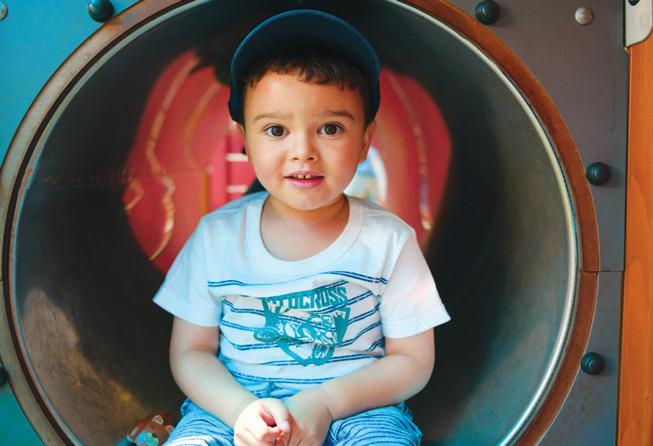

DRINK OF CHOICE
In addition to its flagship wholefoods offering, Local Village Foods also sells the Bissap Beverages product line. The beverage is colourant-free and preservative-free, and is available in Hibiscus Classic or Hibiscus Ginger variants.

Bissap is a natural plant-based African drink brewed from roselle, a species of the hibiscus plant extensively consumed in West Africa. Across the continent it’s known by many names including wonjo, dabileni, tsobo, zobo or sobolo and is frequently the drink of choice for times of gathering and celebration.
HAVE A TASTE
Local Village Foods products are all sold online at localvillage. africa, takealot.com and Zoot.co.za, plus they are available at select pharmacies, retailers, delis and supermarkets across southern Africa.

There are delicious recipes using Local Village Foods products to be found on the company’s blog page (localvillagefoods.com/blog), for those who are new to the world of African wholefoods. “We work closely with chefs, food influencers and recipe developers to devise these dishes,” says Manqele.
She adds that her personal favourite product is fonio, because it can be used as a side dish or as a nutrient-dense breakfast cereal. “I would also recommend people to try our delicious zesty snack bar that contains real local fruits and the baobab superfood.”
So bring a taste of Africa to your dinner table and enjoy a healthy feast!

AN AFRICAN HARVEST
Local Village Foods has recently launched The African Harvest Table series, which features an informative guide to indigenous African ingredients for adults in the form of a coffee-table book (R895) as well as a fun and engaging children’s activity book (R49.99).

The book series explores the rich multitude of local ingredients from across the continent, which are the cornerstones of indigenous culinary dishes. From the simple staples, such as cassava, to the seasonal delicacies like marula, the series unpacks the origins, uses and similarities of the foods that have sustained Africans for generations.

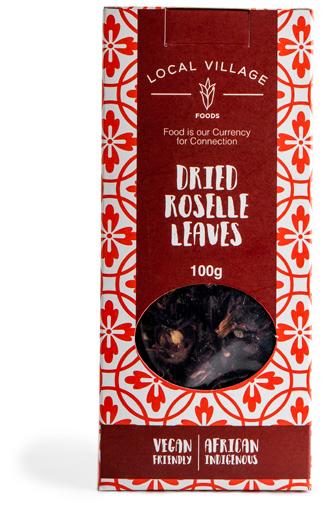
“Through rich imagery and in-depth insights, we seek to educate the young and old about the foods that sustain the people of this continent we call home,” says Manqele.
The books can be ordered at localvillage.africa/productcategory/literature.
NUTRITION African wholefoods 64 Mother & Child Issue 26

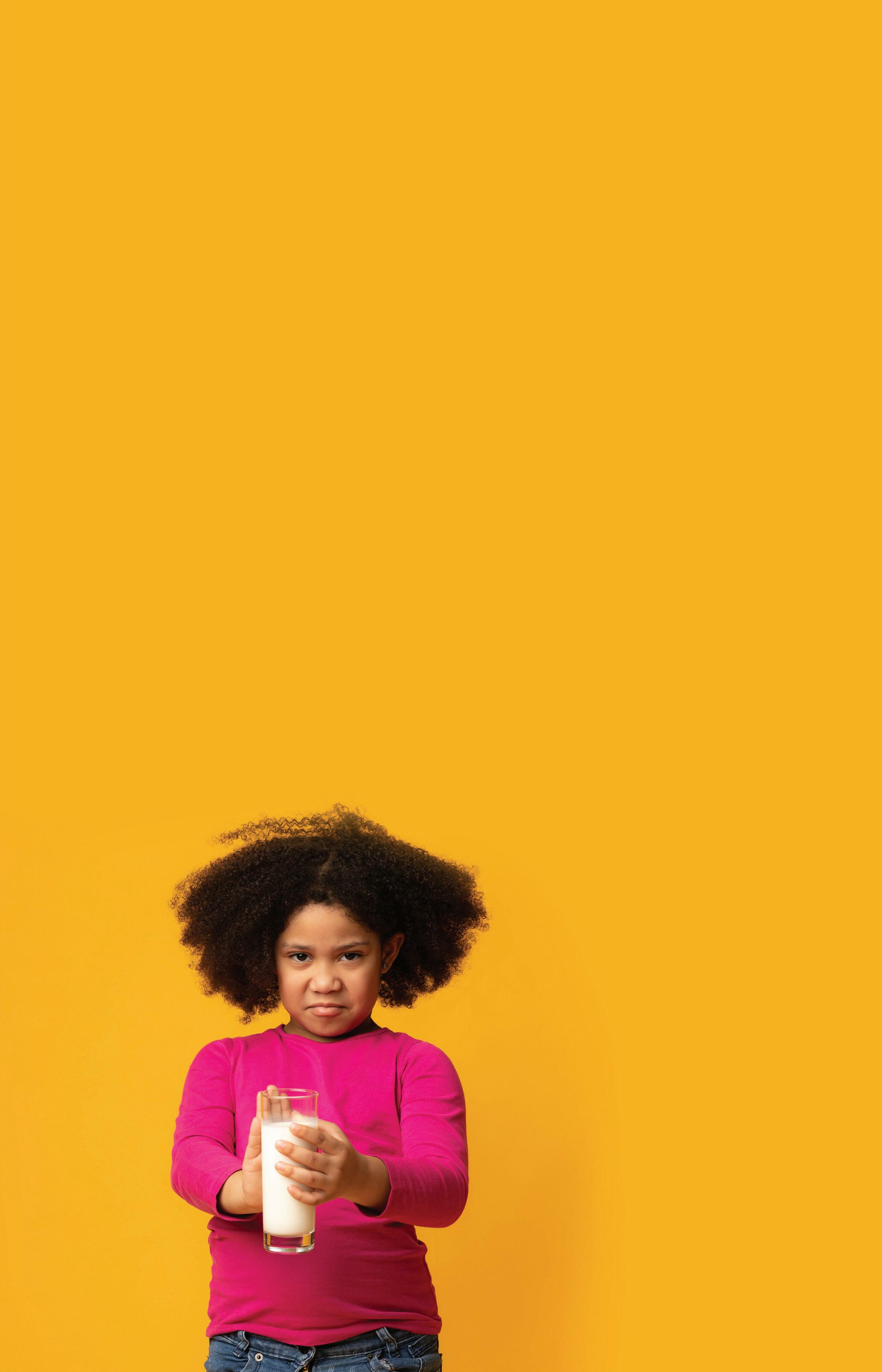
NUTRITION What’s for dinner?
SHOW THEM SOME LOVE

Cooking with Love aptly describes Trish van der Nest’s approach to food. This passionate foodie loves nothing more than to see family and friends gathered around her table, eating a meal she’s prepared. This book pays tribute to some of the friends, family, chefs and cookbook authors whose recipes have become part of her own culinary journey. As a homeopath, Trish understands the role that good nutrition plays in supporting and maintaining well-being, and her healthy carbconscious recipes show it’s possible to prepare delicious, family-friendly meals without sacrificing any flavour, texture or taste. Try them for yourself!
Sticky Chilli Chicken Serves

4 to 6
When my children were growing up, this was an easy dinner dish to whip up in a flash. For a healthier version, use xylitol or erythritol instead of sugar.
INGREDIENTS
• 2 cups (500ml) water
• ½ cup (125ml) white wine vinegar
• ½ cup sugar or non-nutritive sweetener (see Notes)
• 3/4 cup (cup (85ml) soy sauce or tamari (see Notes)
• 3 red chillies, deseeded and finely chopped
• 1 Tbsp grated ginger
• 1kg chicken pieces
• 1 cup chopped fresh coriander or parsley, for garnish
METHOD
1. Combine the water, vinegar, sugar or sweetener, soy sauce or tamari, chillies and ginger in a large pan. Simmer over a medium heat for 3–5 minutes.
2. Add the chicken pieces, cover with a lid and cook for 35 minutes, turning occasionally.
3. Remove the lid and continue cooking for another 25 minutes, turning the chicken until it is cooked through and coated in the sticky sauce. Scatter over the fresh herbs before serving.
NOTES
• Tamari is a gluten-free alternative to soy sauce.
• Instead of sugar, use the same quantity of a granular non-nutritive sweetener like xylitol or erythritol.
• For oven-cooking, arrange the chicken in an ovenproof dish and pour over the warmed chilli sauce. Cover with a lid or foil and cook in a preheated oven at 180°C for 35 minutes, then remove the lid and cook for a further 25 minutes, turning the chicken once or twice.
 Trish van der Nest shows how to prepare delicious, healthy meals for those gathered around your table
Trish van der Nest shows how to prepare delicious, healthy meals for those gathered around your table
66 Mother & Child Issue 26
Spaghetti with Bacon and Prawns in Garlic Butter

Serves 4
My son Matt is always searching for dishes he can whip up in minutes, and this ticks all the boxes. If you’re avoiding carbs, choose baby marrow spirals or gluten-free pasta (see Notes).
INGREDIENTS
• 400g spaghetti
• 60g garlic butter, softened
• 2 tsp lemon juice
• ½ cup roughly chopped fresh basil
• 4 rashers streaky bacon, chopped
• 500g cooked and peeled prawns, roughly chopped
• 1 Tbsp olive oil
METHOD
1. Cook the pasta according to the package instructions. Drain and place in a serving dish.
2. While the pasta is cooking, mix together the garlic butter, lemon juice and half the basil.
3. Heat the butter mixture in a pan. Add the bacon and fry until crispy, then add the prawns and cook, stirring, until just pink. (If you are using baby marrow noodles, add them to the pan at this stage, and cook for 3–4 minutes, until just tender.)
4. Spoon the bacon and prawn mixture over the cooked pasta. Drizzle with olive oil and scatter over the remaining basil. Serve immediately.
NOTES
• Use frozen, medium-sized cooked and peeled prawns, with the shells removed. If necessary, remove the black veins before cooking.
• Because vegetable noodles don’t swell the way cooked pasta does, you need twice the quantity. To serve 4, use 800g baby marrow noodles.
NUTRITION
What’s for dinner?
Issue 26 Mother & Child 67
Karen’s Cassata-style Ice Cream

Makes 2 litres; serves 8 to 10
My friend Karen Wales shared this wonderfully retro ice cream, which combines cherries, chocolate and nuts in a way that is reminiscent of old-school Italian cassata. Serve it in slices, or scoop it into waffle cones for alfresco eating. At Christmas, Karen adds red and green cherries and serves it in a tree-shaped mould because the colours look great on the table!
NGREDIENTS

• 2 litres vanilla ice cream
• 100g mixed nuts, roughly chopped
• 100g glacé cherries, halved or roughly chopped
• 2 Peppermint Crisp bars, crushed, plus extra
• 2 Crunchie bars, crushed, plus extra
METHOD

1. Allow the ice cream to soften just enough to scoop into a bowl. Add the nuts, cherries and chocolates and stir through. (Work quickly to ensure the ice cream doesn’t get too soft.)
2. Scoop the mixture back into the ice cream container, or into a loaf pan that has been lined with cling wrap, allowing some overlap. Smooth the surface, replace the lid or fold over the cling wrap, and return to the freezer for 4–6 hours, or until set.
3. To serve in slices, place a warm cloth around the loaf pan for a few seconds, then invert it onto a platter and carefully remove the pan. Remove the cling wrap and sprinkle over extra chocolate bits and/ or cherries and nuts.
Recipes and images from “Cooking with Love” by Trish van der Nest (R320). Published by Penguin, an imprint of Penguin Random House South Africa, 2022. Used with permission.

68 Mother & Child Issue 26


Space out

DECOR Small rooms
Is that small room in your house just depressing? Here are simple ways to make it appear bigger
70 Mother & Child Issue 26
Having a small room can be a pain. It looks more like a cupboard than somewhere
to live in—and if you have guests staying in it, you actually feel embarrassed by its size. You’d give anything to make it bigger, but unfortunately, renovation just isn’t possible.
Luckily, it’s possible to make it seem bigger! Here’s a simple guide to help you do just that, with everything you need to know
about how to make a small room appear larger than it really is.
EASY ON THE DECOR
When it comes to decorating a small house to make it look bigger, you definitely shouldn’t clutter it with decor. Putting lots of pictures on the walls and filling the space with big, chunky furniture will only make it look even smaller. Keep things more minimalistic when decorating small places—and think about smart storage that will keep your stuff neatly stored away without taking up a ton of room.

PAINT IT BIGGER
When you’re thinking about how to make a small bedroom look bigger, you should also be thinking about colours that make a room look bigger—the two go hand in hand. If you fill your room with dark objects and paint the walls in dark colours, you’re going to make your already-small space seem tiny. So stick to light, bright colours. Keep things plain on the wall with a fresh white that will really open the space up. Then add hints of bright colour in your decor, such as yellow, light blue and green.
Small rooms DECOR
Issue 26 Mother & Child 71
STORE AWAY
Clever storage is one of the easiest ways to make a room look bigger. It’ll help keep surfaces clear and create more space to move around, creating the illusion of a much larger area.
It may be pretty straightforward to find good storage solutions for large spaces, but what about small bedroom storage ideas? Here are some easy ways to create more storage in even the littlest of rooms:


• Opt for multifunctional furniture pieces such as a table that’s both bedside cabinet and desk.
• Clothing storage ideas for small bedrooms can be particularly hard. If you don’t have space for a wardrobe, try open railings instead.
• Make sure the drawers in anything you buy are long and deep so they can keep lots of stuff.
• Use the full height of the room for extra storage. The less often you use something, the higher up it can be stored.
SHELVE IT
One of the easiest bedroom storage solutions is to put up a lot of shelves. These can be used for anything from books and magazines to additional shoe or clothes storage.
COVER AN ENTIRE WALL WITH SHELVING.
This may seem like a lot, but if you do the whole side, it becomes more of a feature wall. Not only does this give you loads of storage, but it’s also a great way to display art, plants and your favourite possessions.

USE A VINTAGE WARDROBE.
Shelving doesn’t have to be open. Try going to retro and second-hand furniture sales and look for pieces with lots of in-built shelving.
BUILD A LADDERSHELVING
UNIT.
It’s surprisingly easy to make your own shelving out of an old step ladder. There are plenty of online guides—try this YouTube video by HGTV for a start: bit.ly/3cSXETh

UTILISE ALL THE SPACE YOU HAVE.
For example, try getting under-thebed storage boxes.
Once you’ve got the hang of making small spaces look larger, you can transform your rooms and create areas that you love. Don’t be afraid to get creative with storage, and remember to keep your colours bright. You’ll create a more welcoming space in no time.
Source: www.cleanipedia.com
DECOR Small rooms 72 Mother & Child Issue 26





















































































































































































































LEISURE Travel 74 Mother & Child Issue 26
Cut the cost, not the fun
Choose a destination that’s close to home, which will result in a significant saving

7 ways you and your family can holiday on a shoestring budget Travel LEISURE
Issue 26 Mother & Child 75
on fuel
With summer almost upon us, everyone is yearning
to get away from it all to enjoy a long-overdue break. But the idea of a holiday nowadays is often so foreign to many South Africans, that they simply don’t even consider it due to the perceived cost. Yet, armed with a little insider info, your next vacay could be just around the corner.
Seasoned traveller and renowned expert in the travel industry, Rioma Cominelli (director of First Loyalty Plus), says: “With a little tightening of one’s belt, monthly saving and expert planning, you can be en route to your first—or next—family holiday before you know it!”
Here are her 7 top tips to get you moving in the right direction:
1. TRAVEL TO A LOCAL DESTINATION.
Location, location, location! Choose a destination that’s close to home, which will result in a significant saving on fuel—and who couldn’t do with that right now? Don’t be fooled into thinking you must travel miles to relax and unwind; sometimes the very best gems are right on our doorstep.
2. BOOK IN ADVANCE, AND FOR A SHORTER PERIOD.
Booking far in advance will not only allow you more time to save for the trip but will also be significantly cheaper than booking at the last minute (when demand is higher). Choosing to go away for four nights instead of six is savvy—that way, you won’t rack up the cost of a full week. And while this may seem too short, consider that five days away is still better than only a weekend away.


3. CONSIDER OFF-PEAK TIMES.
If you have small children or are retired, and you’re not governed by school holidays or weekends, then take advantage of out-of-season/ mid-week specials. This way you’ll be assured of stretching your budget even further, as school holidays and weekends are usually charged at peak season/higher rates.
4. OPT FOR SELFCATERING ACCOMMODATION.
It’s almost always cheaper to book self-catering apartments or cottages rather than hotel rooms. Eating out is also expensive, so save costs by eating in. This needn’t mean hours in the kitchen for mom— pack a picnic for a fun, outdoor adventure, enjoy family braais, or make use of ready-made pizzas or meals.
LEISURE Travel 76 Mother & Child Issue 26
Gynaecologist & Obstetricians:



Dr Ilana Johnson: 021 911 5388
Dr Linda Murray: 021 911 5388

Dr Kate Richardson: 021 531 9933

Dr Amaal Schroeder: 021 531 1526
Dr Jacky Searle: 021 531 9190
Dr Latiefa Vinoos: 021 506 5500
PAEDIATRIC WARD & INTENSIVE CARE UNIT
Our team of Paeditricians and specialised nursing sta will do their utmost to ensure the comfort of your child in a safe, peaceful environment.
our specialised paediatric specialists

General Paediatricians
Dr Leon Jedeikin: 021 531 7317
Dr Carl Wicht: 021 531 1222
super-specialised paediatricians
Paediatrician and Nephrologist Dr Paul Sinclair: 021 531 3082

Paediatrician and Allergologists
Prof Claudia Gray: 021 510 0336 Dr Candice Royal: 021 510 0336
Paediatrician and Neonatologist
Dr Lize Boshoff Coyles: 021 224 0816/ 0817
Paediatrician and Pulmonologist Dr Aruna Lakhan: 021 531 1197
super-specialised specialists
Paediatric Dermatologist


Prof Carol Hlele: 079 930 6366 / 021 045 1554
Paediatric Surgeons
Prof Rob Brown: 021 531 0584 Dr Babalwa Nondela: 067 780 2377 Dr Shamaman Harilal: 021 531 0584
Ear, Nose and Throat Surgeons (ENTS)
Dr Azgher Karjieker: 080 012 9999


Dr Eve Samson: 063 157 1710
Dr Martin Vanlierde: 021 532 2156 Dr Michele Long: 021 531 4282
Dr Paul Crosland: 021 531 1221/021 531 1226
Paediatric Dietician
Susan Cooley-Maree: 021 532 1421
Paediatric Orthopaedic Surgeon Dr Stewert Dix-peek: 021 506 5580
Paediatric orthopaedic, oncology, joint and reconstructive surgeon Dr Thomas Hilton
Dr Keith Hosking
Paediatric Plastic & reconstructive surgeons

Dr Clare Neser Dr Conrad Pienaar
Dr Gareth September
Dr Dehan Strüwig
In a medical emergency, call 0860 123 367 for our FREE advanced life support paramedic response car service. For more information about our service o erings please contact our units: Maternity: 021 506 5165 or Paediatric Ward and ICU: 021 506 5136/5137
Life Vincent Pallotti Hospital Alexandra Road, Pinelands, Cape Town, 7405 www.lifehealthcare.co.za
Water birthing facility
3 labour wards & obstetric theatre
Vaginal births after caesarean section (VBAC)
Neonatal ICU
Private room with double bed to accommodate birthing partner
5. MAKE A LIST.
What good is a summer holiday without your fave cozzie, hat and book that you’ve now forgotten at home? If you don’t make a list to ensure everything gets packed, you’ll be forced to waste time and money shopping for things you’ve left behind. So, keep costs down by not having to spend unnecessarily.


6. ENJOY FREE ACTIVITIES.
They say the best things in life are free—and how much better when you’re on holiday!
First Group Hotels & Resorts, for example, has daily planned activities that won’t cost you a cent. In addition, you can go on a hike, go for a bike ride in the mountains, make use of sports facilities such as tennis courts, do some fishing or spend a day at the beach. Don’t be pressurised into thinking you need to jam activities into every minute of the day to enjoy your holiday—this will be a stressful (and expensive) mistake.
7. JOIN A LOYALTY PROGRAMME.
Accommodation is notorious for eating up the largest slice of your holiday budget, and one of the easiest ways to minimise this is to sign up for a loyalty programme. As a member of First Loyalty Plus, for example, you’ll score up to 50% discount on accommodation, meals, etc.
Cominelli concludes, “The benefits of a family holiday go far beyond the obvious rest and relaxation; it’s the lifelong memories that you’ll create when you’re away from the daily grind, which will last for years to come. By planning your next holiday smartly, you’ll be far more likely to make that dream an affordable reality.”
REWARD YOURSELF
First Loyalty Plus is South Africa’s best all-round rewards programme that offers members up to 50% off a host of amazing lifestyle products, in addition to giving them an opportunity to earn rewards that can be redeemed for things like luxury accommodation, spa treatments, once-in-a-lifetime experiences and even an impressive selection of goodies in the online store. For more information, visit firstloyaltyplus.co.za.

78 Mother & Child Issue 26 LEISURE Travel









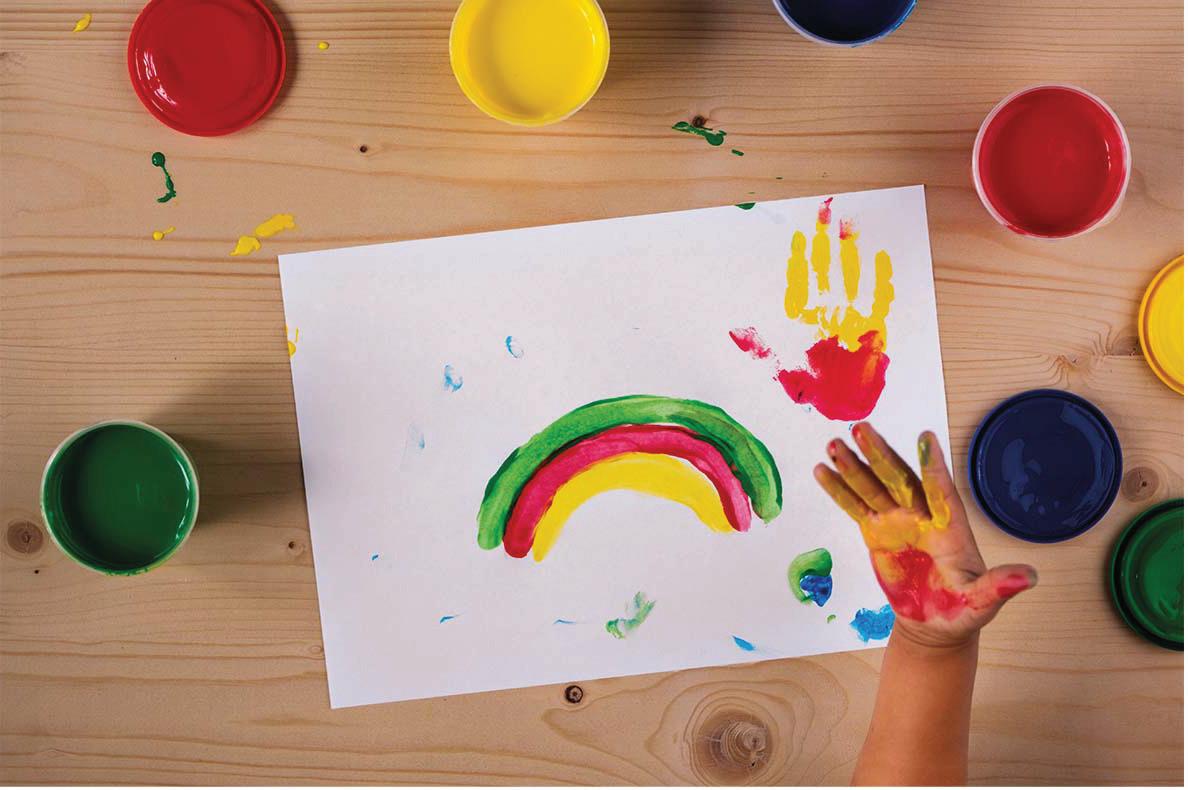
We are Visit www.pna.co.za for more info.


Your business has something special to offer and our job is to give your customers a way to discover you and your brand online. And still have time for your family
We help you develop your story and your voice and connect with the clients who want to do business with you. We like to talk about your business as much as you enjoy sharing it with others. That means we treat your business like it’s our own. We get down to the nitty gritty and find out as much as we can in an initial free consultation with you where you let us in on the journey you’ve taken up to this point and the goals you have, moving forward. We’ll be actively by your side all the way because your success is our success. Chat with us on WhatsApp Visit our website
Let’s chat about your business!


NEVER TOO LATE
Break up with those bad skin habits
Are you treating your skin blindly and just doing what you’ve been told to do so you can claim you have a ‘skincare regime’? Don’t feel bad, most of us are guilty of this—because let’s face it, life gets busy and our skincare can take second place.
Tumi Lehutso from Fundamentals Skincare (fundamentalsskincare.co.za) says that caring for your skin can come first, and it can be easy. We all know that you should remove your makeup before sleeping, drink enough water, and choose the right products. So, let’s get a bit beyond the basics:
COMMON BAD HABIT 1: USING TOO MANY PRODUCTS
Sometimes it’s too much of a good thing, like having a different moisturiser for every day. With so many skincare choices available, you can often overuse or combine products, which can worsen your skin. Stick to products your skin needs—and keep going.
COMMON BAD HABIT 2: NOT LAYERING CORRECTLY
This is something most of us are guilty of, as it’s common to mix skincare formulas to boost their potency—but some combinations just don’t complement each other. These include AHAs and retinoids, vitamin C and retinoids, and salicylic acid and retinoids. Mixing formulas and creating a cocktail of actives nonchalantly can be dangerous, as these ingredients can overstimulate your skin and possibly lead to damaged skin.

COMMON BAD HABIT 3: NOT APPLYING SUNSCREEN
Whether it’s going to the beach for the afternoon or just walking from your workplace to your car or public transport, sunscreen is necessary to protect your skin from sun damage. Some people still believe they only need to apply sunscreen if they’re going to be sitting in the sun for long periods of time. However, dermatologists and aestheticians everywhere will tell you that this is incorrect.
It’s crucial that you keep your skin safe from sun damage every day, even when you won’t be spending much time in the sun.
COMMON BAD HABIT 4: EXFOLIATING TOO MUCH
Exfoliation is crucial and so satisfying when done, but only to a certain extent. Too much or too little can land you in a pickle of bad and sensitive skin—this being irritation, skin flaking and general pain. You may even be unable to get certain facials or use certain types of makeup because your skin is just too sensitive. You only need to exfoliate a few times a week. Additionally, you should only exfoliate with chemical exfoliators, as physical exfoliators very often lead to over-exfoliating in different areas; penetration is not even, and very often these types of exfoliators are too harsh and can damage your skin barrier.
COMMON BAD HABIT 5: PICKING AT BREAKOUTS
No matter your age, at some point you’ll experience a breakout. When this happens, don’t be tempted to pick at pimples. Not only can this bad habit scar your face, but it can also lead to the pimple rupturing underneath the skin surface. If a pimple bursts underneath the skin, it exacerbates inflammation on the surface of the skin, which can cause even more breakouts over time. If you feel you need to extract a pimple, talk to a professional about removal methods.
84 Mother & Child Issue 26
BEST
BUYS Beauty
1. SKNLOGIC RETINOL 0.5% BOOSTER (R280) AND PROTECT SPF40 (R305)

The next-generation, fast-absorbing encapsulated retinol formula in SKNLOGIC’s Retinol Booster dramatically reduces the appearance of fine lines, wrinkles and hyperpigmentation. Added soyaglycone maximises the effect of the retinol. SKNLOGIC Protect is a full-spectrum sun-protection cream that also provides antiageing benefits. It goes beyond UVA and UVB protection to help defend from blue light (digital pollution) and environmental pollution, as well as infrared light emitted by the sun. Online at www.sknlogic.com or leading salons and spas across the country
2. FUNDAMENTALS PEPTIDES
MOISTURISER (R175)
While noticeable ageing may start in your 30s, premature ageing starts in your 20s. That’s why skincare is so important. This new peptide cream is a highly concentrated moisturiser that provides a boost of hydration to the skin, and targets signs of early ageing (such as fine lines and wrinkles) by increasing collagen production. It’s a veritable peptide warrior with 2% hyaluronic acid, 1% copper tripeptide and 1% acetyl hexapeptide, which can be used morning and night—one product that does it all. fundamentals-skincare.co.za
3. HAIRTAMIN MOM (R550)

Our bodies go through many changes throughout pregnancy. Often times, our hair changes too—with hair shedding or thinning being a common side effect. This vegan hair vitamin has been formulated into a complete prenatal and postnatal dietary supplement to help nourish your and your baby’s body, as well as your hair. It even helps with morning sickness! superbalist.com
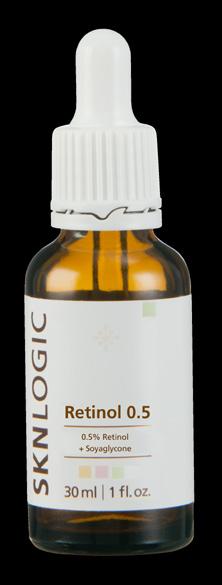
4. SKIN CREAMERY SKIN SCENT (R450)


Skin Scent gently merges with your skin’s own natural smell into something surprisingly familiar. Inspired by aromachology, itt captures your unique aura with a contrasting blend of earthy, citrus and spicy notes. Vetiver, lime and coriander soften into a milky rose to subtly amplify your natural essence. Like your skin, but better. skincreamery.com

5. W7 VERY VEGAN EYESHADOW PALETTES (FROM
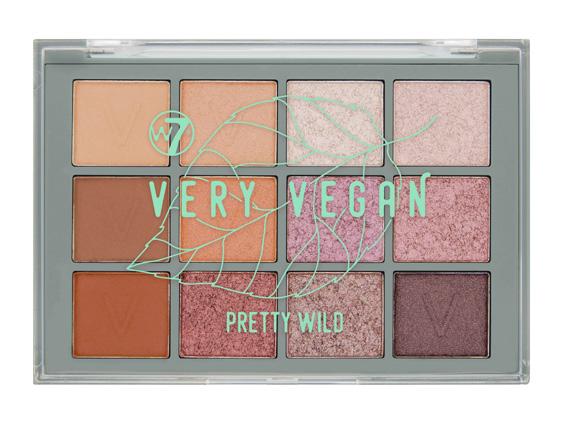

R175)
W7 now has a range of makeup products approved and certified by the Vegan Society. The eyeshadow palette features a blend of 12 matte and metallic eyeshadow colours for a natural, everyday glam. “Pretty Wild” contains springtime shades comprising oranges, coppers, pinks and purples for bright but delicate looks; while “Au Naturel” contains autumnal colours such as nudes, golds, browns and smokes for a warmer look. takealot.com, superbalist.com and www.caretobeauty.com
6. CLARINS RESCULPTING FLASH ROLLER (R610)
This roller massage, inspired by Clarins’ Spa expertise, promotes lymphatic drainage and depuffs facial features. The two curved edges of the zinc gua sha conform to the contours of your face and provide precise pressure and massage for a lifting and purifying effect. A pure moment of spa relaxation in your own home. www.clarins.co.za


2 3 1 5 6 4 Issue 26 Mother & Child 85 Beauty BEST BUYS
WIMPY LAUNCHES MULTILINGUAL AFRICAN FOLKTALE COLLECTION ENCOURAGING DIVERSITY, INCLUSION AND LITERACY

It’s no secret that Wimpy is one of SA’s most loved restaurants, a familiar family favourite where young and old are welcome. As a proudly South African restaurant, Wimpy recognises Mzanzi’s richness and has partnered with Ethnikids, an online children’s bookstore started by five South African moms, for a second year to give children access to an African folktale collection in their home language.
Passionate about kids and their education, Wimpy has again partnered with Ethnikids to bring its edu-tainment philosophy to life. “Children are close to our hearts and core to our offering. Our collaboration with Ethnikids enables us to bringing real South African stories to kids in a fun and engaging way,” says Jodi Law, Brand Manager, Wimpy.

In a country with 11 official languages, mother tongue books are not readily available, and most children’s books lack cultural context.
“It is critical that children are exposed to literature that includes diverse ethnicities, this positively impacts a child’s self-image and develops pride in who they are and where they come from” says Seago Maapola, educational psychologist.
Stories that speak about who we are play an important role in representation, guiding what we should be proud of. “When there is a lack of representation, children are exposed to a single narrative based on stereotypes, this leads to them experiencing negative psychological outcomes and often feeling like they’re not good enough,” adds Maapola.
Wimpy commissioned Ethnikids to develop a multilingual, multicultural folktale collection giving children access to diverse characters and stories that they can relate to and identify with. The collection is based on five South African folktales, with some of SA’s most talented authors and illustrators collaborating to provide children tales that represent the rainbow nation’s melting pot of cultures.
The books are available on the Wimpy website in all 11 official languages, as well as in Khoe/ Nama the original Bantu language of the Khoisan people that is being advocated to become one of SA’s official languages. The English versions are available at Wimpy restaurants nationwide with every kid’s combo meal.
“This year’s campaign includes an interactive online and inrestaurant experience encouraging children to engage with the stories.

Children can choose their own ending by scanning a QR code at the back of the books, using their own imagination to expand on the narratives” adds Law.
A second phase of the campaign will enable kids to collect 3D cardboard puppets from each of the featured books. These fold-out scenes will include different characters and allow kids to make use of their imagination, acting out scenes and making up their own characters.
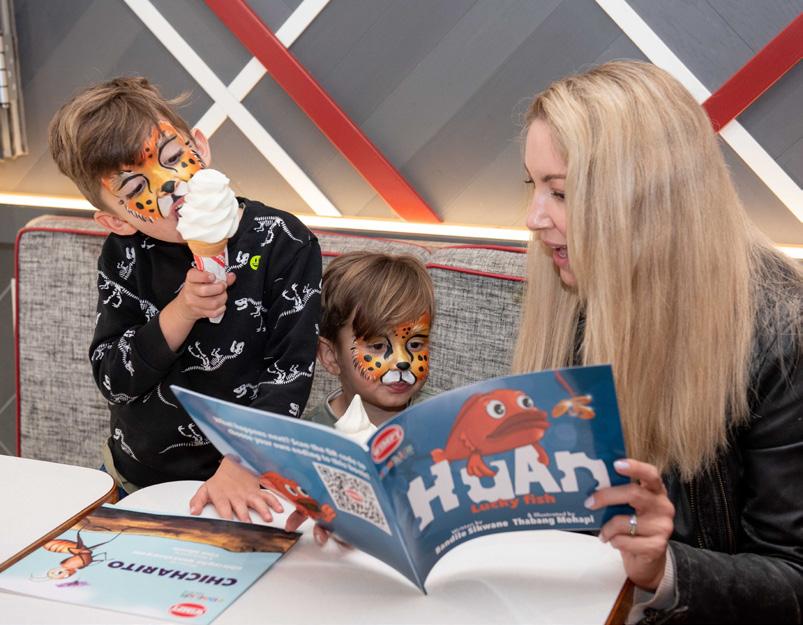
Visit https://wimpy.co.za/kids/ mzanzi-stories/ to find out more.




Our favourite things
A pick of the latest quality must-haves for your little one

1. THE TASTY TIE (R175)
A stylish and practical (and oh-so-cute!) silicone teether, crinkle toy and clip-on baby tie accessory all in one. The clipon feature prevents dropping, making the tie a must-have in the car or on your travels. The tie also helps babies gain control over their movements as they work toward self-feeding. At the end of the tie, there’s a soft silicone tip with little bumps that help baby soothe sore gums. www.kidsemporium.co.za
2. MAXI-COSI MICA PRO ECO I-SIZE CAR SEAT (R9

899)
This car seat (from birth to 4 years) uses Eco Care, which means it has 100% recycled fabrics—the first sustainable car seat of its kind. The smart builtin FlexiSpin rotation makes the Mica Pro Eco a smoothly rotating 360° car seat—you need use only one hand! It’s unbelievably quick and easy to get your little one in and out of the car. What’s more, the 5-point safety harness will keep your baby safe and secure at all times, with multiple recline positions and extra padding for cushioning. azbaby.co.za
3. BAOCARE BABY BAOBAB & GREEN ROOIBOS OIL (R200)

This gentle baby oil serum is made with the gentlest plantbased ingredients to give your little one’s skin all the nurturing attention it needs. It soothes irritations, insect bites, cradle cap, nappy rash, teething rash and other skin irritations common among babies. See www.baocare.co.za for stockists or to purchase online
4. TOMMEE TIPPEE DREAMMAKER (R859.99)
Developed by sleep scientists, the Dreammaker is a proven sound and light sleep aid that

helps your little one sleep better by simulating ideal sleep conditions, rather than stimulating him. The soothing red light encourages the production of the sleep hormone melatonin, and is minimally stimulating so won’t disturb baby (or you) once asleep. The rhythmic pulses of soft light mimic the slow, deep breaths of baby’s relaxed breathing rate, which helps him drift off to sleep. And pink noise mimics the natural sounds of the womb and encourages baby to fall asleep faster, deeper and for longer.
See www.tommeetippee.co.za for stockists or to purchase online
5. TOMMEE TIPPEE SMUSHEE 1ST SELF-FEEDING SPOON (R179.99)
A self-feeding spoon that’s perfect if your little one wants to take feeding into her own hands. There’s no right or wrong way to hold the Smushee, so your baby can simply dunk the spoon in her bowl and the food will grip and stay on. BACSHIELD™ protects the spoon’s surface by reducing bacteria by up to 99.99%.

See www.tommeetippee.co.za for stockists or to purchase online
6. WELEDA CHILDREN’S TOOTH GEL (R130)
Children’s Tooth Gel looks after new and developing teeth and provides natural protection against cavities forming. With extracts of organic calendula flowers to keep gums healthy, silica for thorough cleaning, and natural flavours of fennel and spearmint, it makes cleaning teeth a happy ritual. It contains no ingredients that could cause harm if swallowed—no fluoride, either. www.shopweleda.co.za

88 Mother & Child Issue 26
BEST BUYS
for Babies
2 3 4 5 1 6





It 's summer BABY! BABY! he heY heY heY 9999 Rompers Take 2 for 7999 Vest and Leggings Set 100% COTTON PACK 2 7999 2 pack Vest or Leggings NEW IMPROVED SOFT TOUCH FABRIC 100% COTTON USE ANY OF THE BELOW CARDS TO SHOP AT JET. T&Cs apply. While stocks last.
Growing up fast!
1. STEPHEN JOSEPH DOUBLE-WALL STAINLESS STEEL WATER BOTTLE (R349)

An adorable double-walled bottle to keep your kiddo hydrated— whether with hot chocolate or cool lemonade. These bottles have been designed to hold enough of your tot’s favourite beverage without wearing out his little hands. Free of all the bad stuff like BPA, phthalates and PVC, but full of all the good stuff, like leak-proof lid with easy-open button, and sturdy stainless steel construction. www.faithful-to-nature.co.za and takealot.com
2. MELISSA & DOUG ANIMAL RESCUE SHAPE SORTING TRUCK (R399.90)

With this rugged safari truck, two cheerful rescue rangers are ready to zoom across the savannah to help their six animal friends. Lift and remove the cargo door to unload the colourful animals, then count and stack the solid-wood pieces before loading the truck and securing the door in its track. toykingdom.co.za
3. DINNER WINNER KIDS’ DINNER TRAY
(R399)
Dinner Winner makes food fun! The goal is to get to the finish line, where a special covered treat awaits, so even fussy eaters will clean their plate. Dinner Winner is moulded from 100% virgin melamine, and is food-safe and dishwasher-safe. takealot.com

4. COCOMELON SNACKTIME JJ DOLL (R729)

This bento-style toy lunchbox—in the shape of popular CoComelon character JJ—comes with a threepiece tray, a fork, a spoon, and some toy food items like a piece of toast with egg, an apple and an ice lolly. This is the perfect toy for preschoolers to learn about counting and about the different food groups, all while discovering colour when sorting shapes and building various foods. Your little one will enjoy listening to songs and sounds when he feeds JJ and presses the doll’s tummy. Loot.co.za, takealot.com
5. OH SO HEAVENLY TOTS ‘N TODDLERS FOREST FUN GENTLE BUBBLE BATH (R62.99) & ALL-PURPOSE EMOLLIENT CREAM (R39.99)


The creamy bubble bath forms masses of bubbles to make bath time fun time. Infused with 100% natural rooibos, the extra mild, colourfree and soap-free formulation is clinically proven to be gentle on the softest, most precious skin. After the bath, use the emollient cream (with rooibos and shea butter) to intensely hydrate and nourish your tot’s delicate skin for up to 24 hours. Clicks stores nationwide, and online at www.clicks.co.za
6. THE FRONT-FACING BOOKSHELF (R1 790)
All the books you’ve so carefully chosen for your child are easy for her to see and reach on this frontfacing bookshelf. Even before a child is able to read, seeing the colourful and engaging cover illustrations gives her an insight into the contents of the story, and so encourages her to want to read it, either on her own or with mom or dad during story time. studiodoodle.co.za

BEST BUYS for Toddlers
Here
are a few nifty products for mommy’s big girl and big boy
2 3 6 1 4 5 90 Mother & Child Issue 26





heybaby! heybaby! heybaby! heybaby! heybaby! heybaby! baby doodle illustrations 8999 Matching Sets from each GET IT ON ACCOUNT 13999 Character Swimwear from each 12999 Dungarees from each T&Cs apply. While stocks last. heybaby! heybaby! heybaby! heybaby! heybaby! heybaby! baby doodle
Easy does it
Novel products to give mummies a helping hand
1. PHILIPS AVENT SINGLE ELECTRIC BREAST PUMP

(R3 900)
Inspired by baby and effective for mom, the Natural Motion technology of the Philips Avent Electric Breast Pump keeps milk flow at an optimum and gently adapts to your nipple size and shape. It provides the perfect balance of suction and nipple stimulation—inspired by the natural way babies drink. The quiet motor allows you to express milk anywhere, discreetly, while the soft and adaptive silicone cushion is gentle and comfortable. Better yet, the breast pump expresses quickly, meaning you’ll get more milk out in less time.
Baby City, Dis-Chem and Babies R Us stores, or online at www.takealot.com or www.medhealthsup.com
2. THE KINDNESS CO. FLY AWAY REPELLENT (R79.99)

This 100% natural fly repellent contains no harmful chemicals, toxins or poisons. Spray on all surfaces like countertops, door frames and window frames—and when dining outdoors, spray on tables or tablecloths to repel flies or bees for at least two to three hours. Not to worry, this product won’t kill the flies or bees, just repel them. www.thekindnessco.co.za
3. BRAMLEY AFRICAN COLLECTION TISSUE OIL (R26.99)


This premium range from Bramley Cosmetics—formulated with selected 100% naturals oils and elegantly fragranced with delicious sweet floral scents— will enhance and amplify your mood and confidence. There are two variants: Argan Oil & Macadamia, and Aloe Vera & Olive Oil. Argan oil is known as liquid gold for its restorative properties, while aloe vera is known for its intensive moisturising and cooling properties. These tissue oils will help prevent stretch marks, scars, dark spots and assist with an improvement in skin texture and tone. The oils spread easily and are quickly absorbed.
Selected PEP Stores nationwide
4. SLEEPY BOTTLE (R2 300)
The world’s first totally portable baby formula maker—no more nighttime trips to the kitchen! Sleepy Bottle keeps formula dry and warms water to a perfect 37°C while you sleep. When baby awakes, just twist and shake to mix the formula with the water— it’s ready in seconds. Great for daytime feeding, too. www.kidsemporium.co.za

5. SOPURE MITE-FREE BABY FABRIC SPRAY (R139.95

FOR 500ML)
This spray aids in neutralising allergy-causing proteins in mites and their excretion. It can be used on beds, pillows, bedding, cots, curtains, carpets, car seats, fluffy toys and upholstery. It also aids in eliminating viruses, bacteria, moulds and mildew without using harmful chemicals or additives. Free from fake scents and anything animal, the innovative pure formulation is 100% nontoxic. Gentle on fabrics, babies and the planet. sopure.co.za
6. PHILIPS AVENT ADVANCED ELECTRIC STERILISER (R3 020)
Sterilise up to six feeding bottles with accessories in just 10 minutes, after which time the steriliser automatically turns itself off. The new drip tray protects the heating plate from milk droplets, reducing the chance of unpleasant odours. Sterilising is gentle, effective and chemical-free, using the power of pure steam, to keep your baby’s items sterile for up to 24 hours. The steriliser also kills 99.9% of germs, for peace of mind at every feed. Baby City, Dis-Chem and Babies R Us stores, or online at www.takealot.com or www.medhealthsup.com

2
6 5
3 1
4
BEST BUYS for Moms 92 Mother & Child Issue 26
ENJOY










Freshpak Junior Rooibos Freshpak Junior Organic Rooibos Freshpak Junior Strawberry & Vanilla Freshpak Junior Apple Freshpak Junior Peach & Apricot Freshpak Junior Naartjie


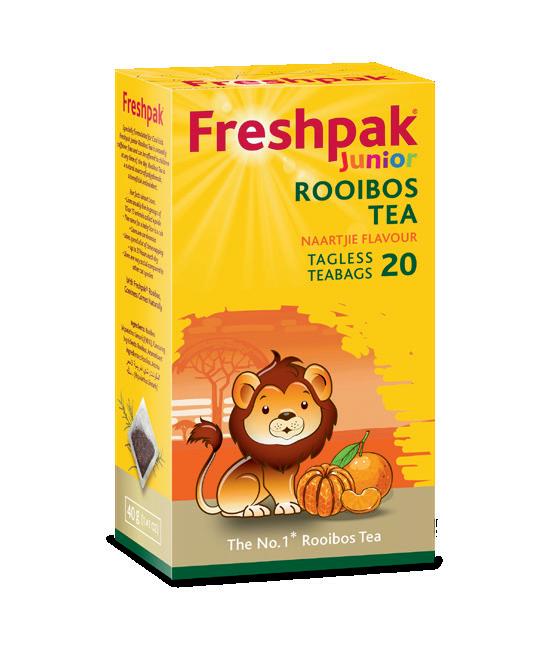



Goodness comes naturally for your whole family HOT OR AS A REFRESHING ICED TEA, FRESHPAK JUNIOR IS AVAILABLE IN THE FOLLOWING FLAVOURS:

Scan for refreshing iced tea recipes
Looking for a healthy alternative to sugary drinks? Specially formulated for Kids, Freshpak Junior Rooibos Tea is naturally caffeine free and can be offered to children at any time of the day. Rooibos Tea is a natural source of polyphenols, a beneficial antioxidant.
We love BOOKS
Bedtime stories, a touch-and-feel book, and a new release of Peter Rabbit are all among this quarter’s favourite reads for youngsters
TEN MINUTES TO BED: WHERE’S LITTLE UNICORN?

by Rhiannon Fielding (R170)
It’s almost time for bed... but where’s Twinkle? Travel through the Land of Nod and help find the little unicorn to say goodnight! This magical lift-the-flap adventure features sturdy, durable flaps on every spread as young children search for Twinkle, meeting all their favourite characters from the Ten Minutes to Bed series along the way: from Rumble the Dinosaur to Flicker the Dragon.
FLAP! RATTLE! STOMP!
by Irene Berman (R187)
Meet a guinea fowl mom looking for her chicks, a porcupine rock star, and a bad-tempered young buffalo in this beautifully illustrated collection of South African animal stories.

PEPPA’S TINY CREATURES

by Ladybird (R190)
It’s a lovely day, so Mummy and Daddy Pig are taking Peppa and George on an exciting nature walk— and your little one can touch and feel all the amazing things they find along the way! Little hands will love to feel the fluffy bee, the bumpy tree trunk, the shimmery butterfly, the soft grass and the shiny snail’s shell.
BLUEY: THE POOL by

Ladybird (R170)
On a trip to the pool, Bluey and Dad tease Mum about being fussy and over-prepared, but they soon realise that’s what makes the fun things possible. Little fans of Bluey will love this 24-page board book that makes a perfect bedtime story.
94 Mother & Child Issue 26
THE TALE OF PETER RABBIT —120TH BIRTHDAY EDITION
by Beatrix Potter (R190)
This original tale sees Peter Rabbit at his most adventurous, cheekiest and lovable self as he wriggles into Mr McGregor’s garden—and into young reader’s hearts. Beatrix Potter’s original text appears here in full, along with her beautifully engaging illustrations in a new format that’s perfect to introduce children to this famous rabbit.

AMARA GOES TO THE OLYMPICS

by Ms YJ Banda (R150)
Amara’s bullies are mean and harsh. But this year, she decides to try out for the school Olympics. She tries out for not one, not three, but all the events. Will the little girl with a flower ribbon in her big, curly hair who gets teased so often; the sick, scared girl at the hospital who couldn’t reach high places, beable to successfully compete? Or will she just make a huge fool of herself?
PROTECT OUR PLANET: TAKE ACTION WITH ROMARIO (R190)

Meet Romario Valentine, an 11-year-old eco-warrior from Durban, South Africa. Through his tree planting, beach clean-ups, avian art and other conservation projects in Africa and other parts of the world, this young activist has become a dynamic campaigner for the future health of our planet. In Protect our Planet, Romario enthusiastically guides young nature lovers through key environmental topics: from recycling and reforestation to pollution solutions and climate change.
THE MIDNIGHTERS
 by Hana Tooke (R250)
by Hana Tooke (R250)
Ema Vašková has always felt different. It doesn’t help that she appears to predict events before they happen, and has a peculiar fear of shadows... When Ema is sent to stay with her eccentric uncle in Prague, she fears she’ll lose the chance to ever fit in. But then she meets Silvie, a girl who finally sees Ema for the extraordinary person that she is. But then disaster strikes. Silvie goes missing, and it’s up to Ema to find her. Now she must gather the courage to hunt the city, find her friend, and uncover the secrets of the one clue Silvie left as to where she may be—inside the mysterious Midnight Guild.
LEISURE Reading
All books published by Penguin Random House
Issue 26 Mother & Child 95


The information included on this material is not intended to replace you healthcare professional’s advice. References: 1. ProbiFlora™ Probiotic Infant Drops 3-Strain Regular Drops Professional Information June 2020. 2. Wang, H., Wei, C-X., Min, L., et al. Good or bad: gut bacteria in human health and diseases. Biotechnology & Biotechnological equipment 2018;32(5):1075–1080. These unregistered medicines have not been evaluated by the South African Health Products Regulatory Authority for quality, safety or intended use. S0 ProbiFlora™ Probiotic Infant Drops 3 Strain Regular Drops. Each dose per 4 drops (0,167 ml) contains Bifidobacterium lactis BL-04 400 million CFU, Lactobacillus rhamnosus LR-32 300 Million CFU, Lactobacillus salivarius LS-33 300 million CFU. Health Supplement. Category D: Complementary Medicine. 34.9: Probiotics. Adcock Ingram Limited. Co. Reg. No. 1949/034385/06. Private Bag X69, Bryanston, 2021, South Africa. Customer Care: 0860 ADCOCK/232625. www.adcock.com. 2022071210214294 July 2022


GOOD BACTERIA is essential for gut health, immune support and general well-being 2 . PROTECT BABY GUMS, TUMS AND BUMS Immune Support1 Treats Diarrhoea1 Oral Health1



















































































































































 By Claire Parker
By Claire Parker










































































































































































































 By Nikki Martyn
By Nikki Martyn




















































 Trish van der Nest shows how to prepare delicious, healthy meals for those gathered around your table
Trish van der Nest shows how to prepare delicious, healthy meals for those gathered around your table

































































































































































































































































































 by Hana Tooke (R250)
by Hana Tooke (R250)


